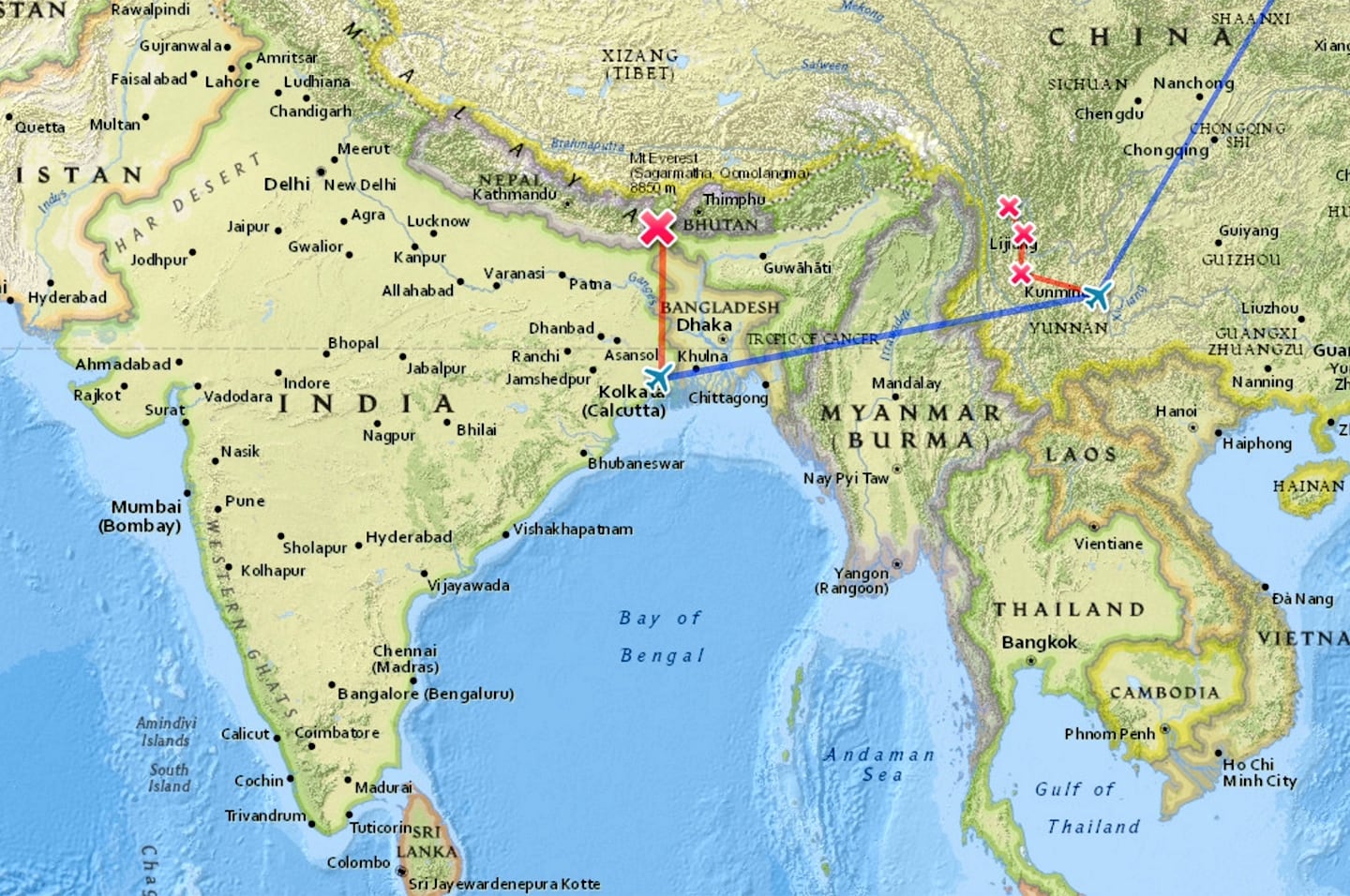
For background on the big trip, get up to speed here. For an overview of the India portion, click here.
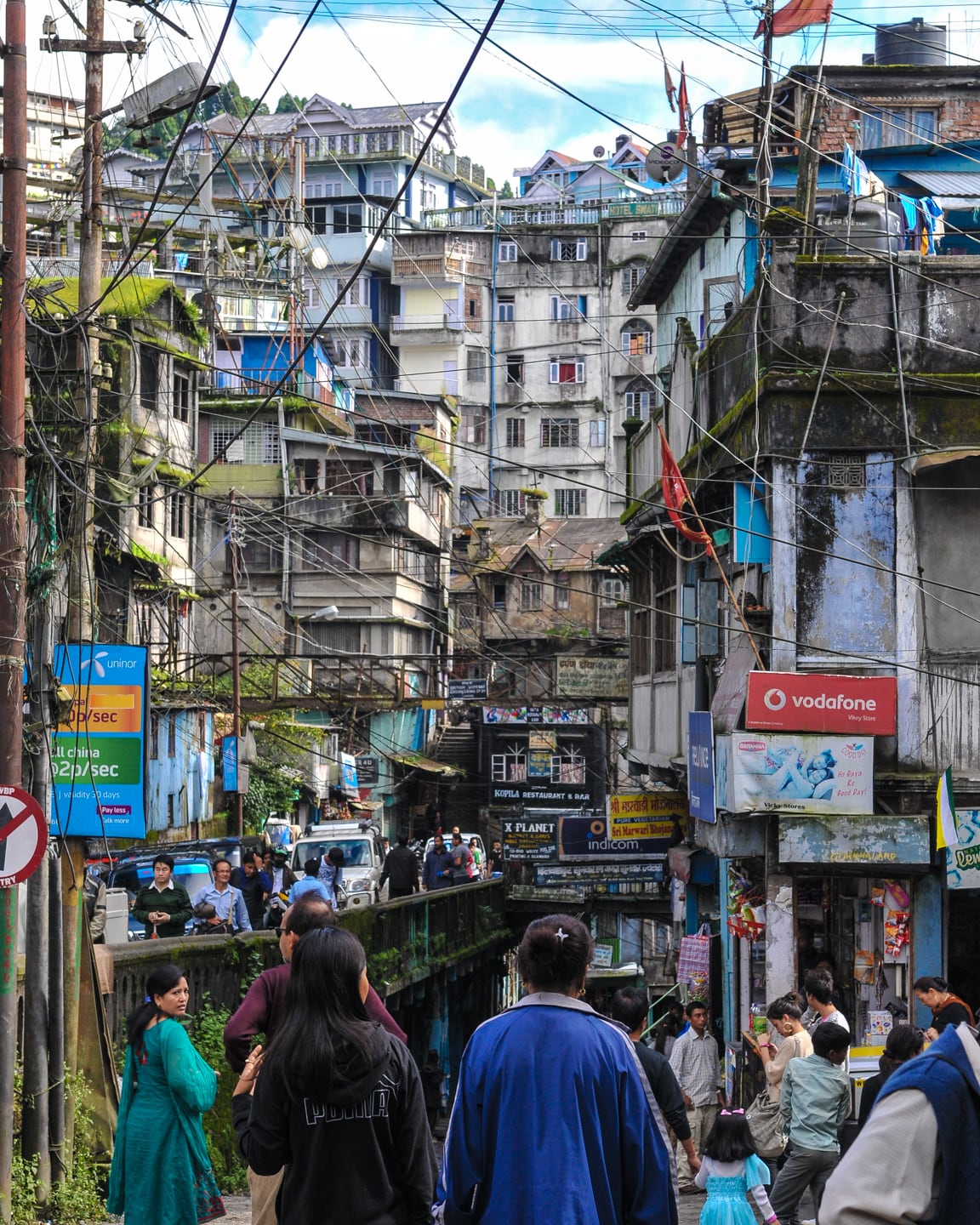
Let’s rewind a moment. My intention for this travelogue is an honest look via photos and commentary of the places we visit. I think it’s appropriate to add here that I’m not new to travel or life in the developing world, or poverty, decay, etc. for that matter. I lived and worked for two years as a Peace Corps volunteer in a reed hut without running water or electricity in a small fishing town in — what was at the time — the fourth poorest country in the world: Mozambique — a place, which despite its deep frustrations and myriad challenges, continues to relentlessly occupy my dreams and many of my better memories. In addition to this, I’ve traveled extensively throughout the developing world in many other parts of Africa, South America, and now Asia. And I hold a masters in International Development Studies focussing on poverty alleviation at the community level and post-conflict transformation.
The reason behind this brief resume of sorts is that I know of a lot of people who find themselves utterly appalled by the level of poverty, corruption and pollution when visiting India for the first time. For me personally in recent years, I’ve found myself becoming somewhat desensitized to all of that — it’s not that I don’t care, far from it in fact. It’s that I just don’t see it any more. I see other things.
In India, the things that tend to strike me first are those which stand in striking contrast to other places I’ve been. Luckily, as far as India is concerned, over the course of seven weeks these contrasts have proven to be more of the positive cultural, spiritual and human aspects, and less of the negative. I have come to appreciate the warmth and kindness of folks in Rajasthan, West Bengal and Kerala, something people in China rarely outwardly displayed to us.
As we rest in Chennai with friends — readying to leave India for Thailand — I reflect on our time in India and realize my memories are a collection of small clusters of unique experiences, not one experience of India. In the West, we fool ourselves into thinking that their is one singular and unified experience when traveling overseas, and build our expectations and dreams around tikka dots, gurus, garlands and holy temples. Likewise, we fool ourselves into believing that Chinese and Indian people are suppose to look and act a certain way, just as many try to convince others that American roots are white and Protestant.
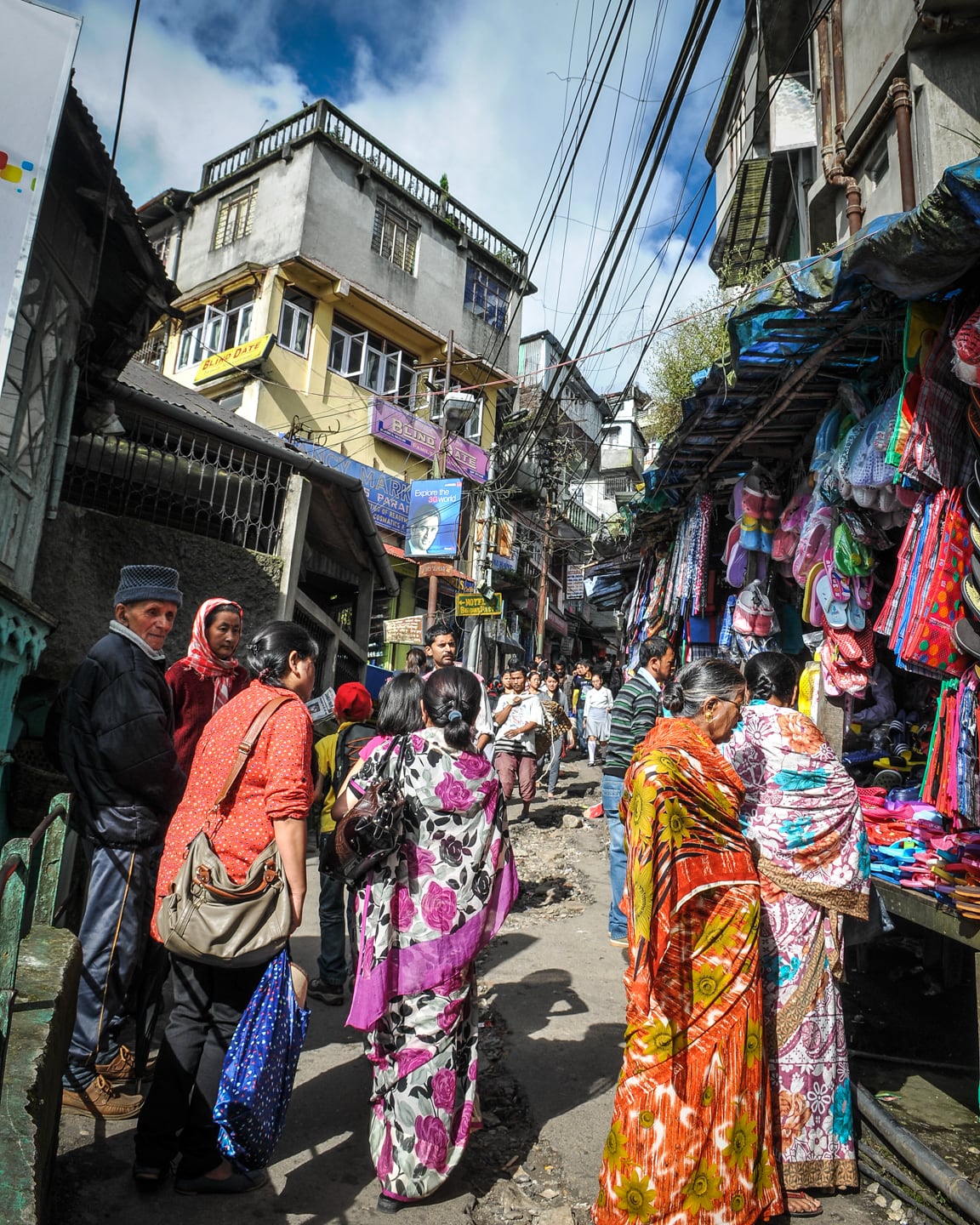
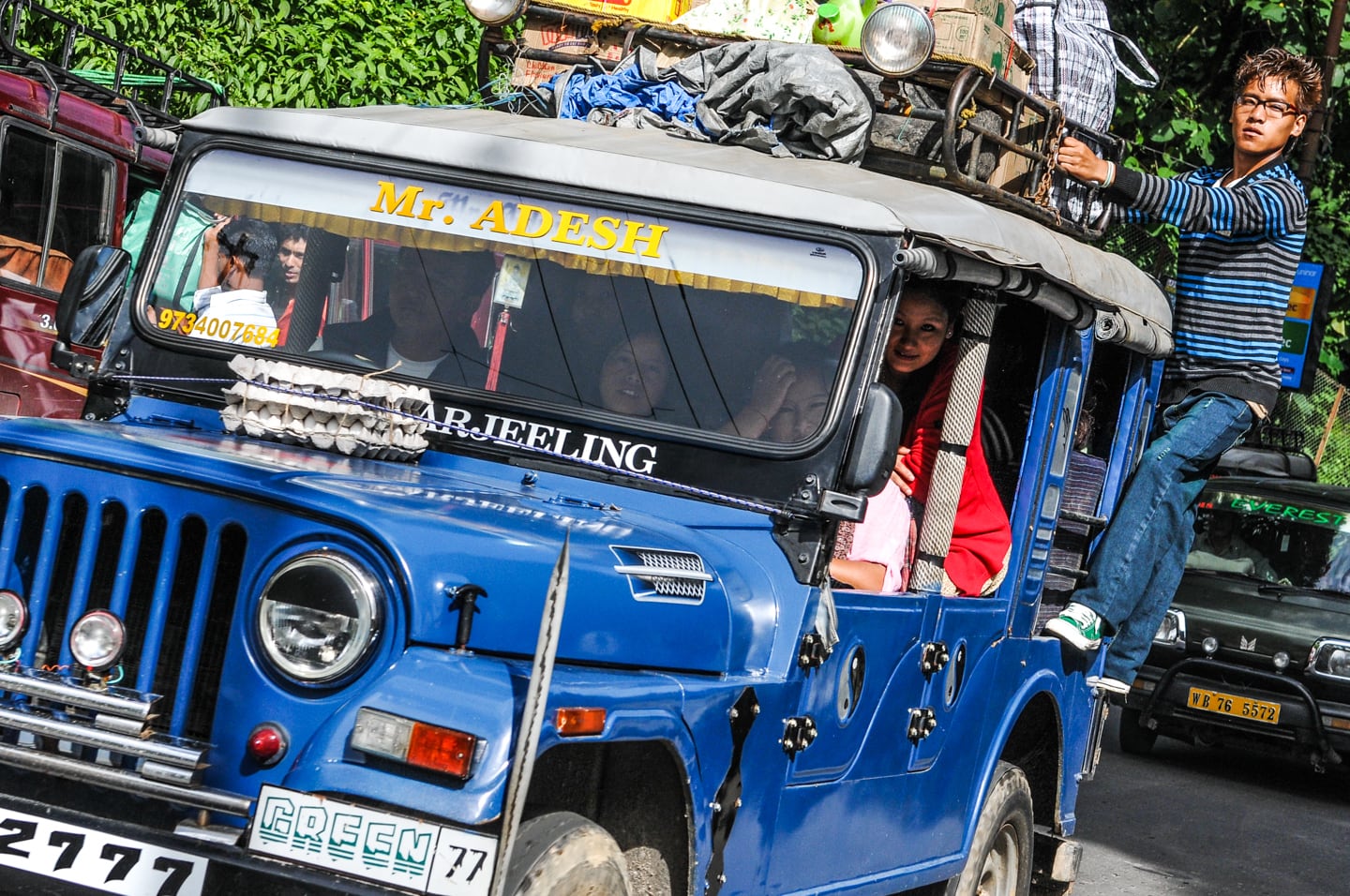
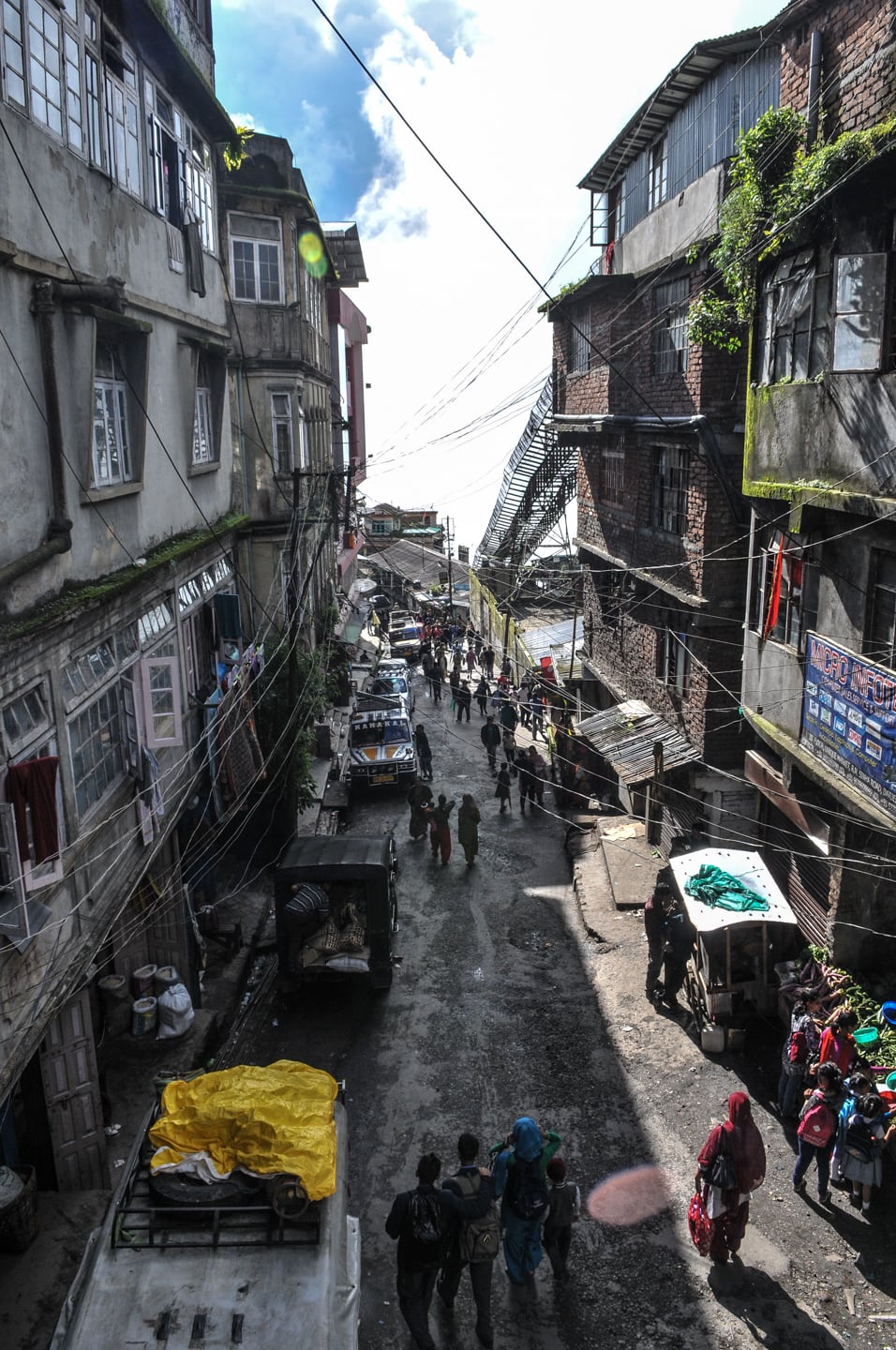
With that in mind, let’s return to my initial reaction on arriving in Darjeeling. The natural geographic setting in which Darjeeling finds itself is nothing short of stunning. A former British hill station established high above West Bengal’s jungle floor at 6,700 feet (2000m), where aristocrats and tea lovers went to escape the oppressive heat and frenzy of Calcutta. It lies at the foot of the Himalaya mountain range, and you can even spot three of the world’s highest peaks (including Everest) from just outside town on a clear day. The 3-4 hour near vertical approach from the valley floor offers breathtaking views of unparalleled beauty, which perhaps is why Darjeeling itself came as such a surprise.
Now don’t get me wrong, we really enjoyed our time in Darjeeling. It still retains a great deal of charm even beyond the views and teahouses. I’m typically a sucker for places shaped by organic and largely uncontained urban development — these days the types relegated to less economically developed nations and underserved urban communities everywhere — where zoning laws and building codes are either ignored or don’t exist — where wires and cables and water lines remain unapologetically out in full view and homes are added to over years and decades whenever the money trickles in.
This is Darjeeling. A crazy mess of steep, twisting streets and alleyways and towering hotels and apartments slowly decaying in the clouds from moss and perpetual dampness. Despite Darjeeling being a hill station seemingly secluded on a mountain ridge, the traffic throughout town (especially on Hill Cart Road) can be as bad as anywhere — and normally, I find all of the above very interesting. But I guess I somehow expected a different fate to befall this famous outpost of tea and Himalayan culture. It’s a chaotic, frenetic city, far from the image cultivated by marketing execs in Delhi or Kolkata of a blissfully restful place to while away the days sipping tea and taking in bucolic mountain views. Sure, there are posh resorts outside of town that offer this for a price — but don’t be fooled — that is not the real Darjeeling.
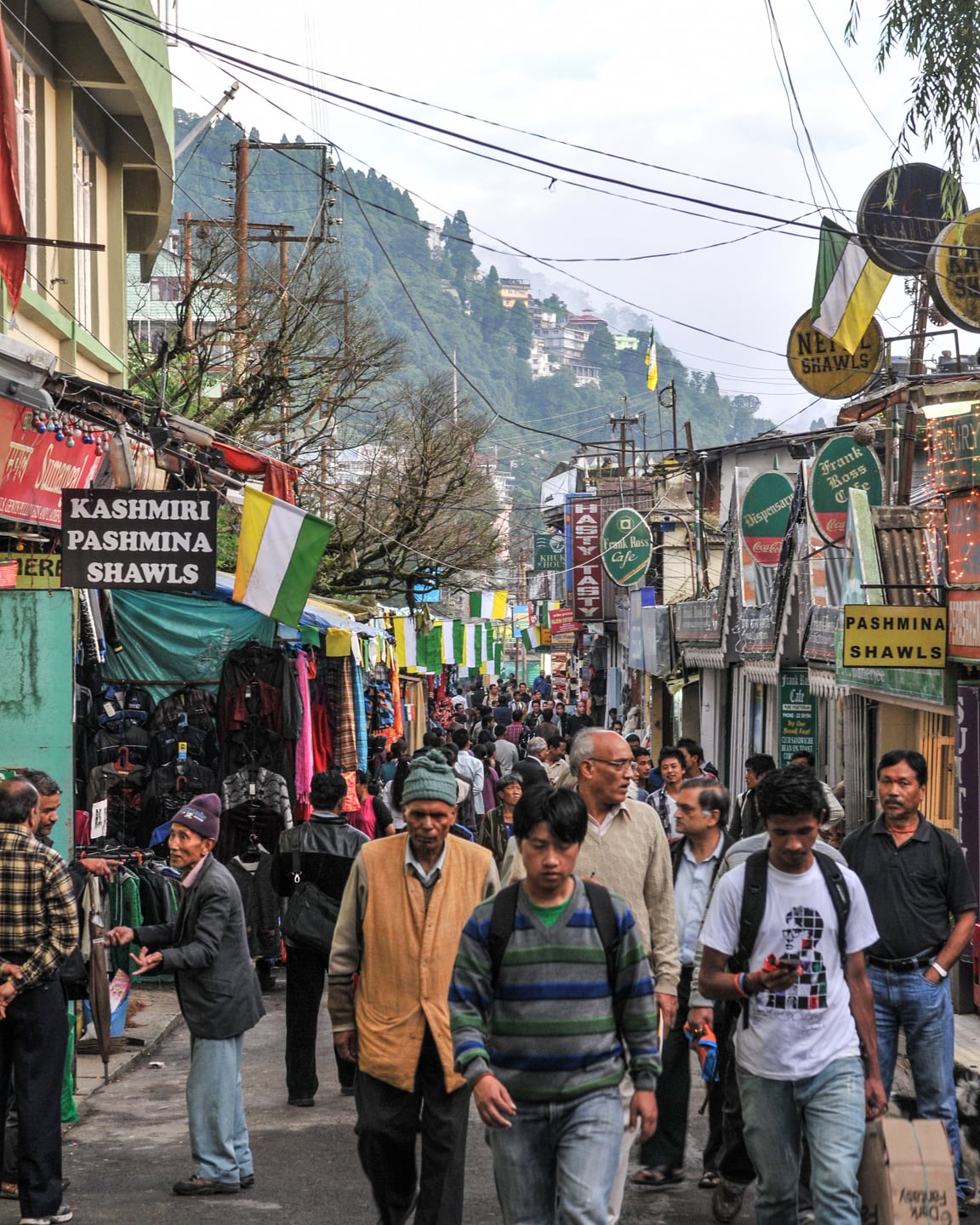
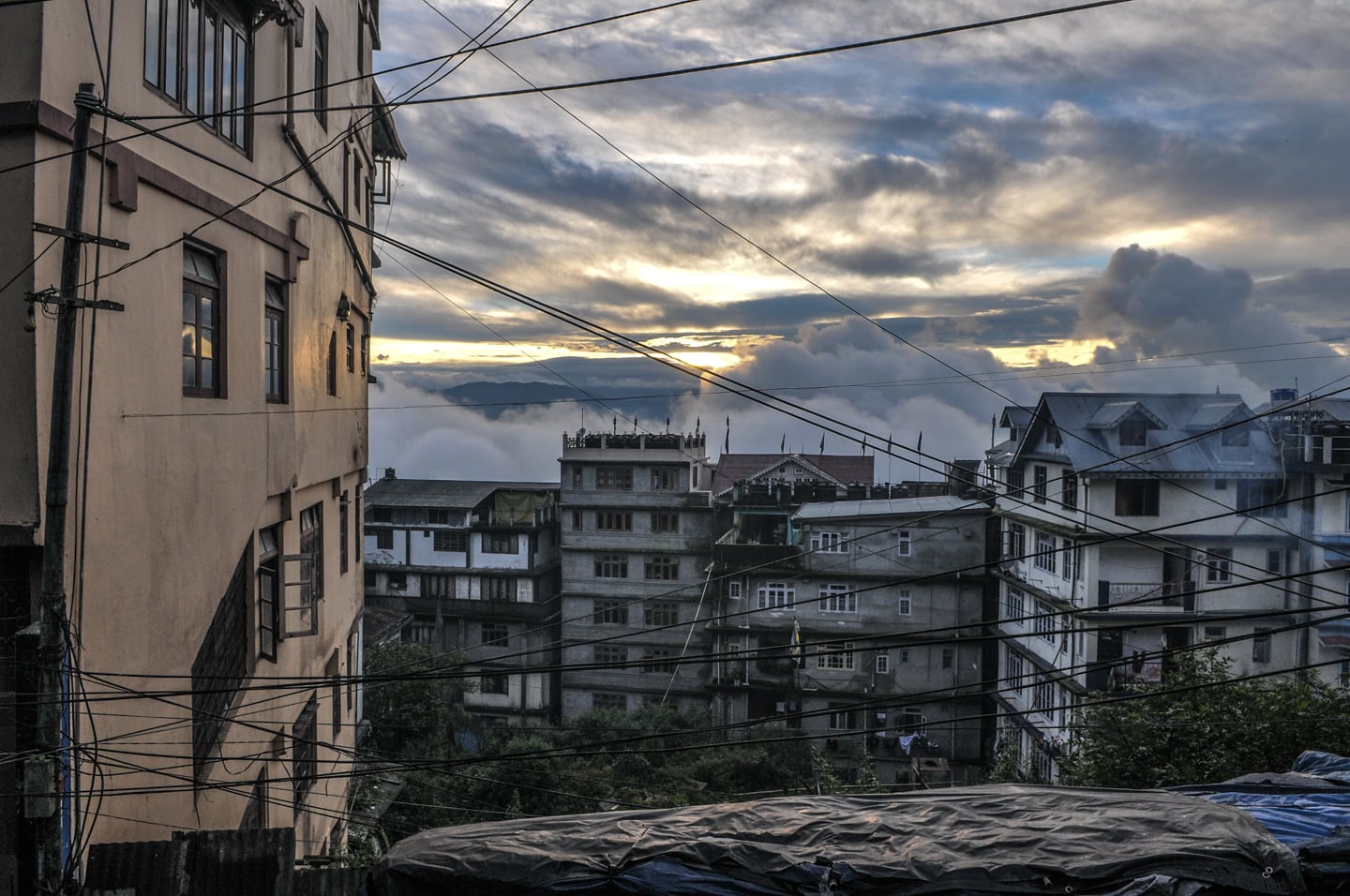
Higher up the hill, away from the main highway, pockets of solitude do exist — and Lori and I found ourselves spending the majority of our time in such places. We were incredibly happy with our choice of accommodation — Hotel Tranquility — which certainly lives up to its name.
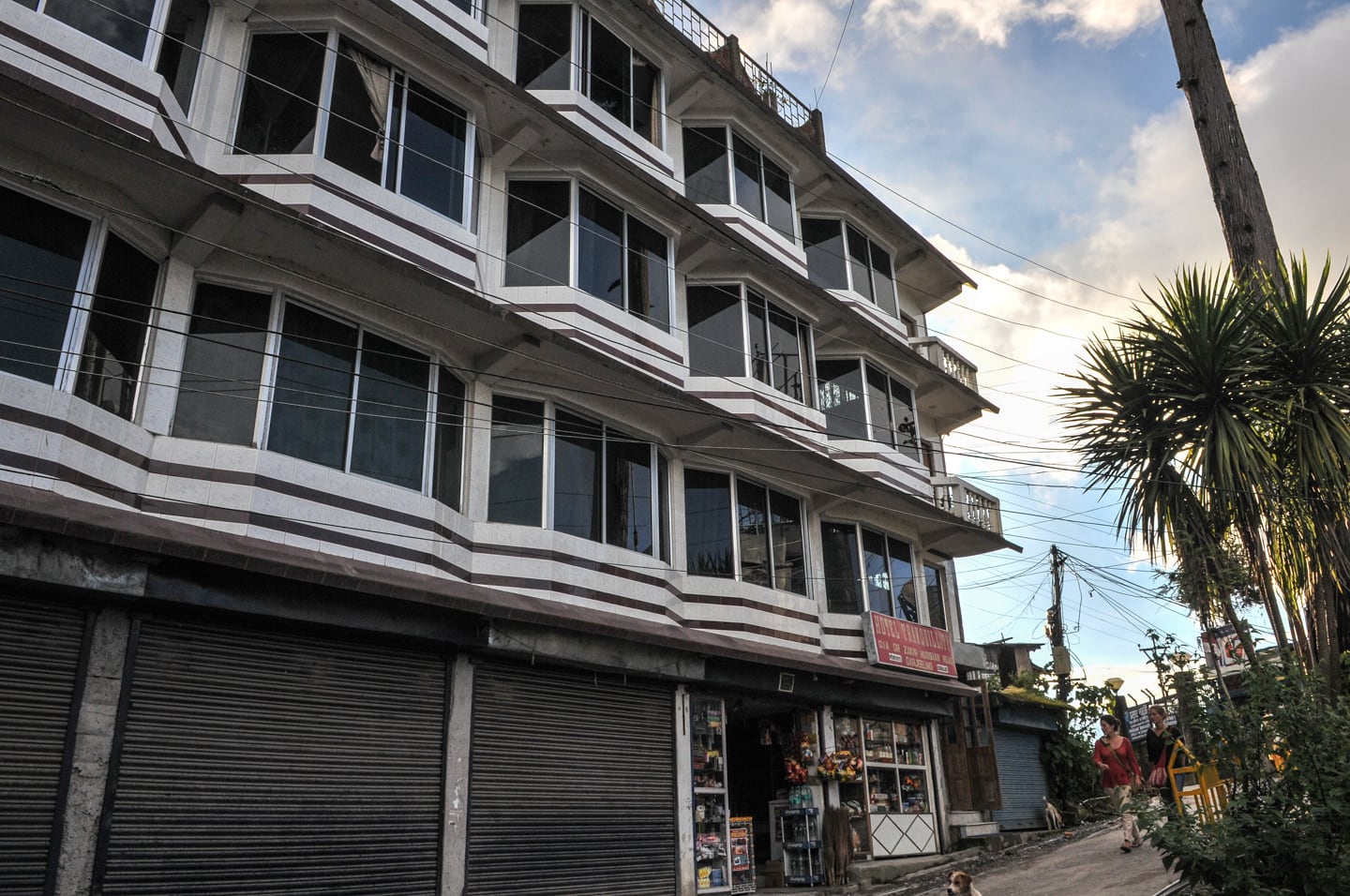
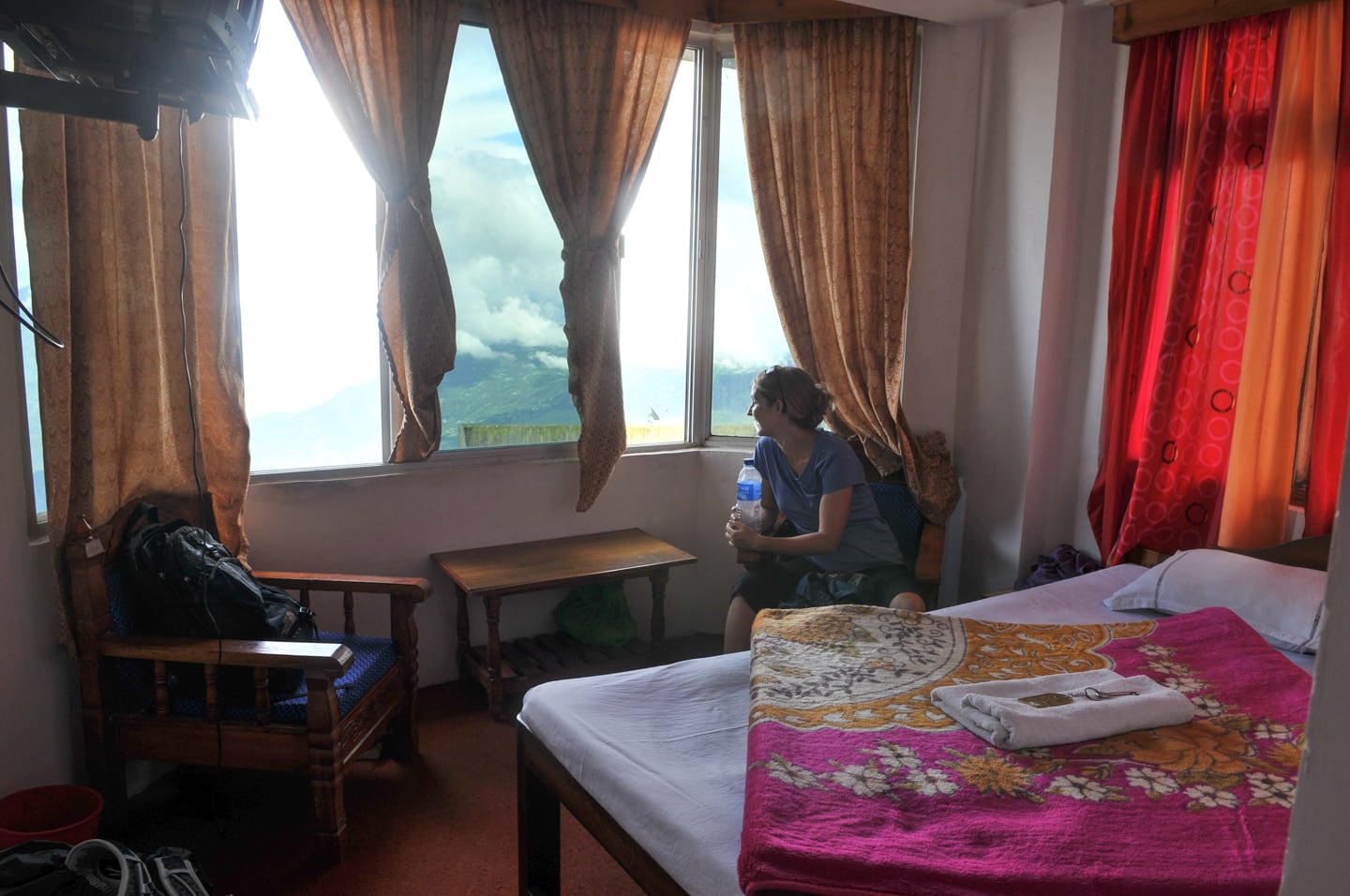
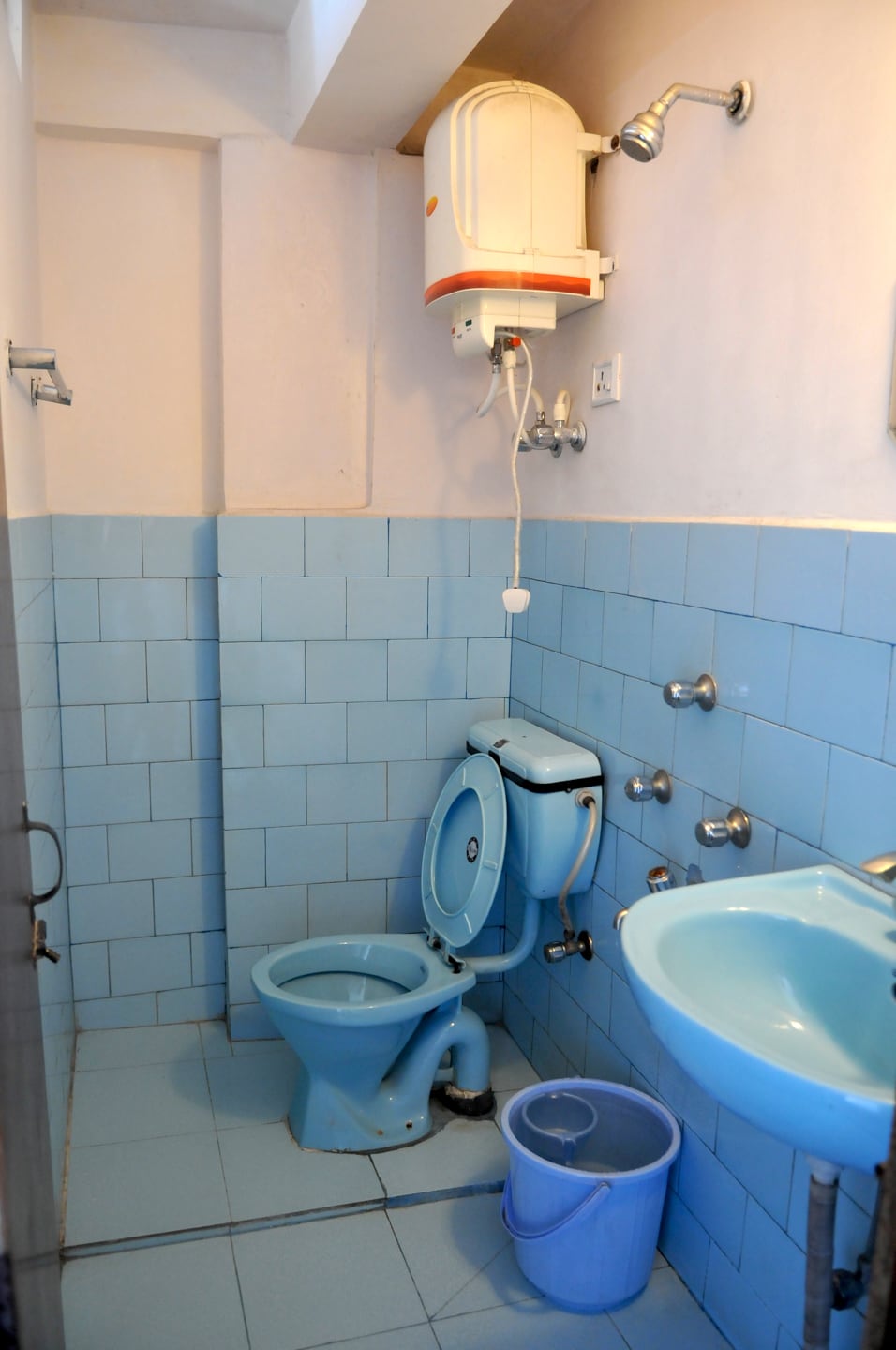
Most days, we utilized the much quieter back road of Dr. Zakir Hussian road (which connects the hotel with the main square) to get around town. A few quiet and tasty places line this street including Sonam’s Kitchen (our favorite for breakfast) and Gatty’s Cafe which has a unique menu and free wifi. Nehru Road, the main pedestrian thoroughfare which runs parallel to Hussian, also has a number of good traveler-oriented eateries such as Glenary’s Bakery and Frank Ross Cafe.

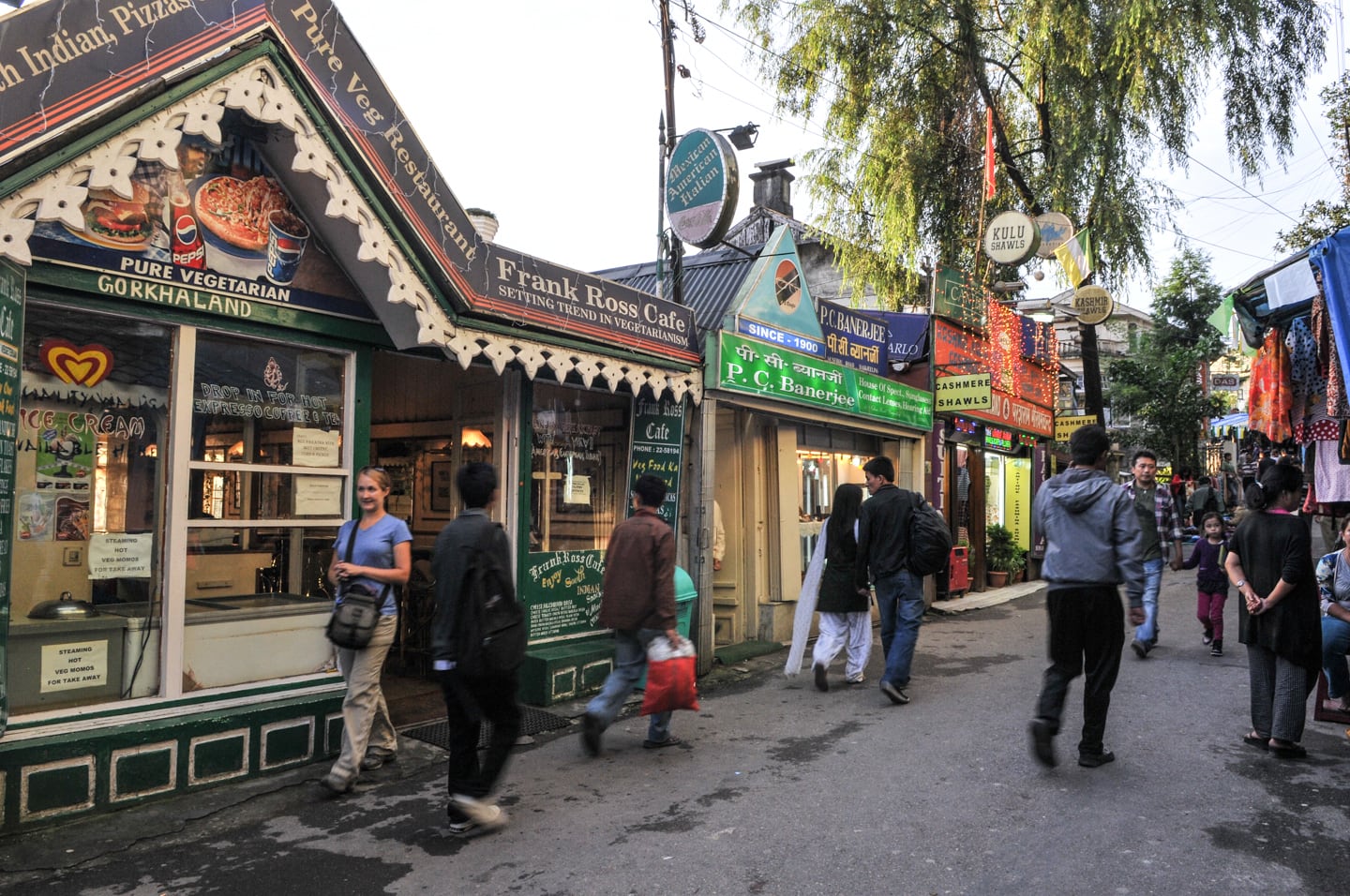
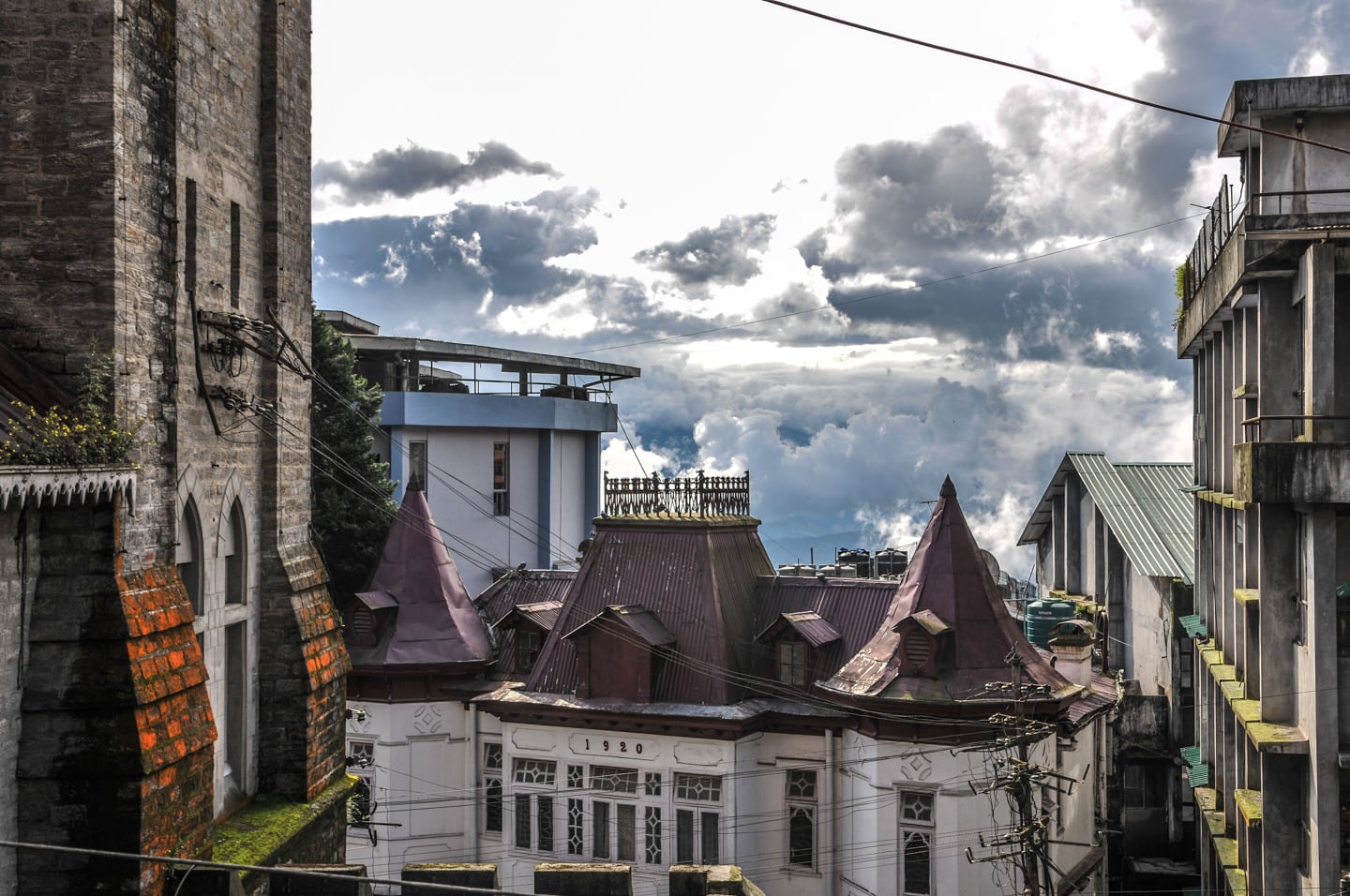
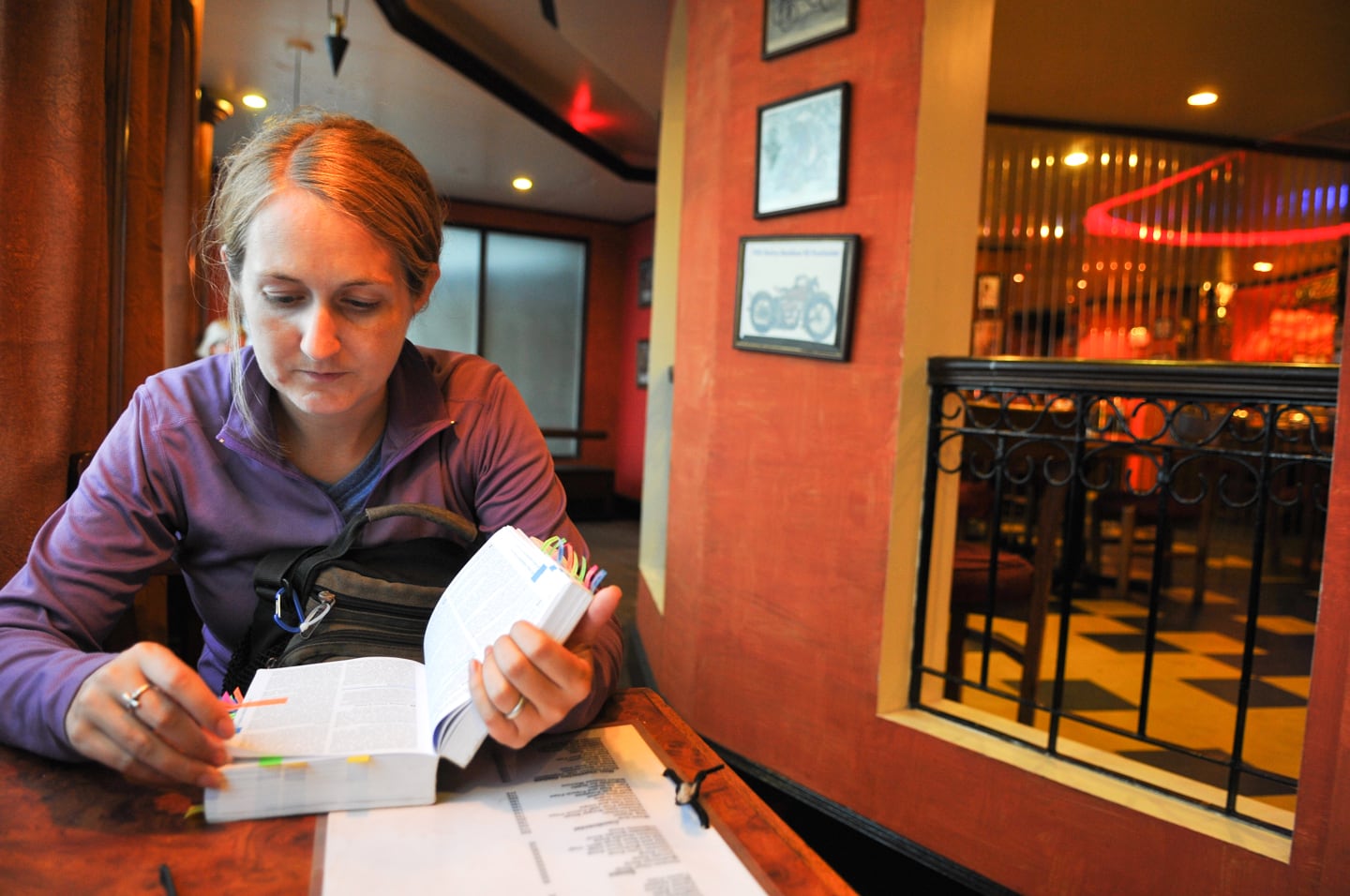
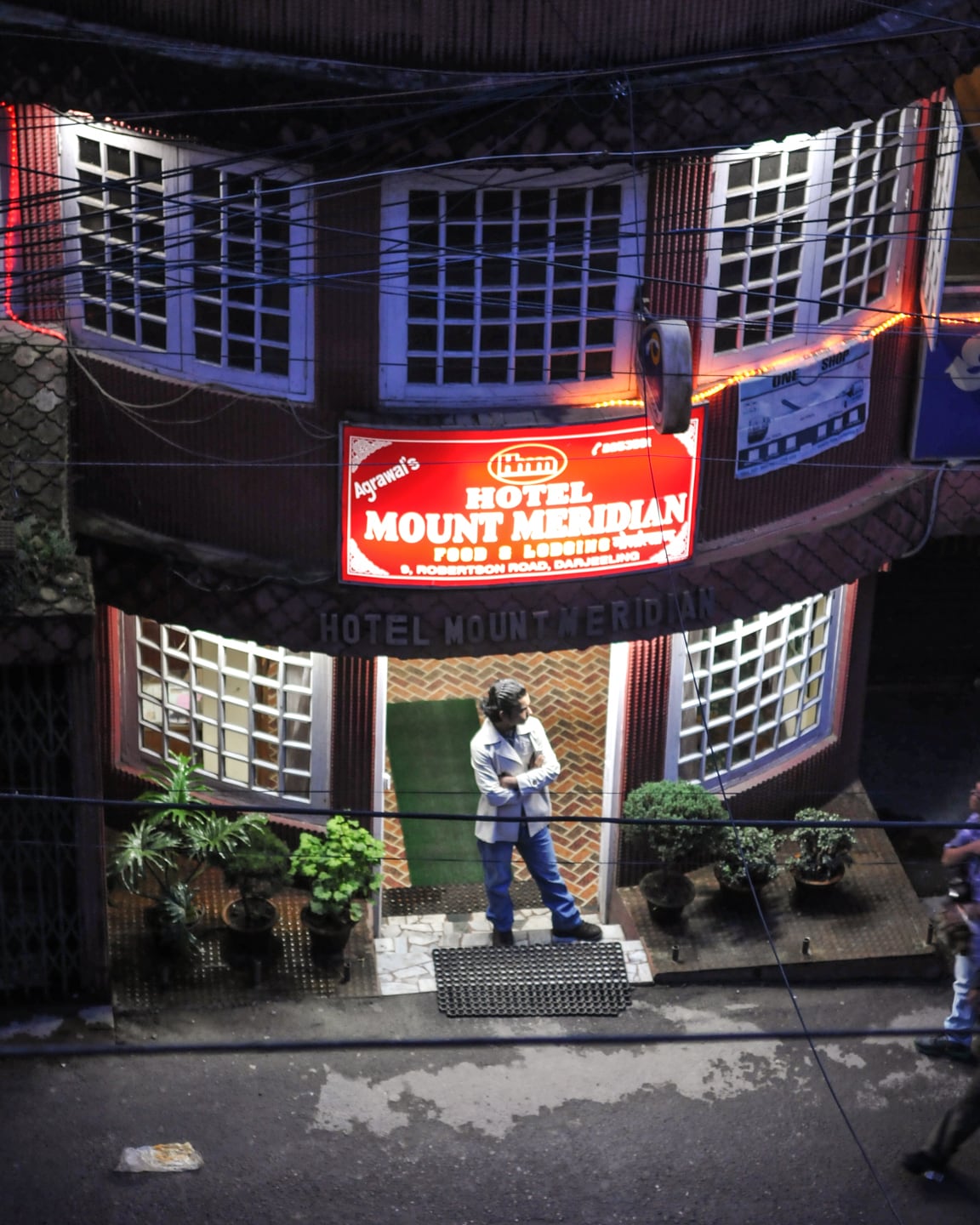
For even more serenity and solitude, a morning or evening walk up Observatory Hill to the Mahakal temple is a must (complete with a colorful array of stringed banners and temple monkeys).
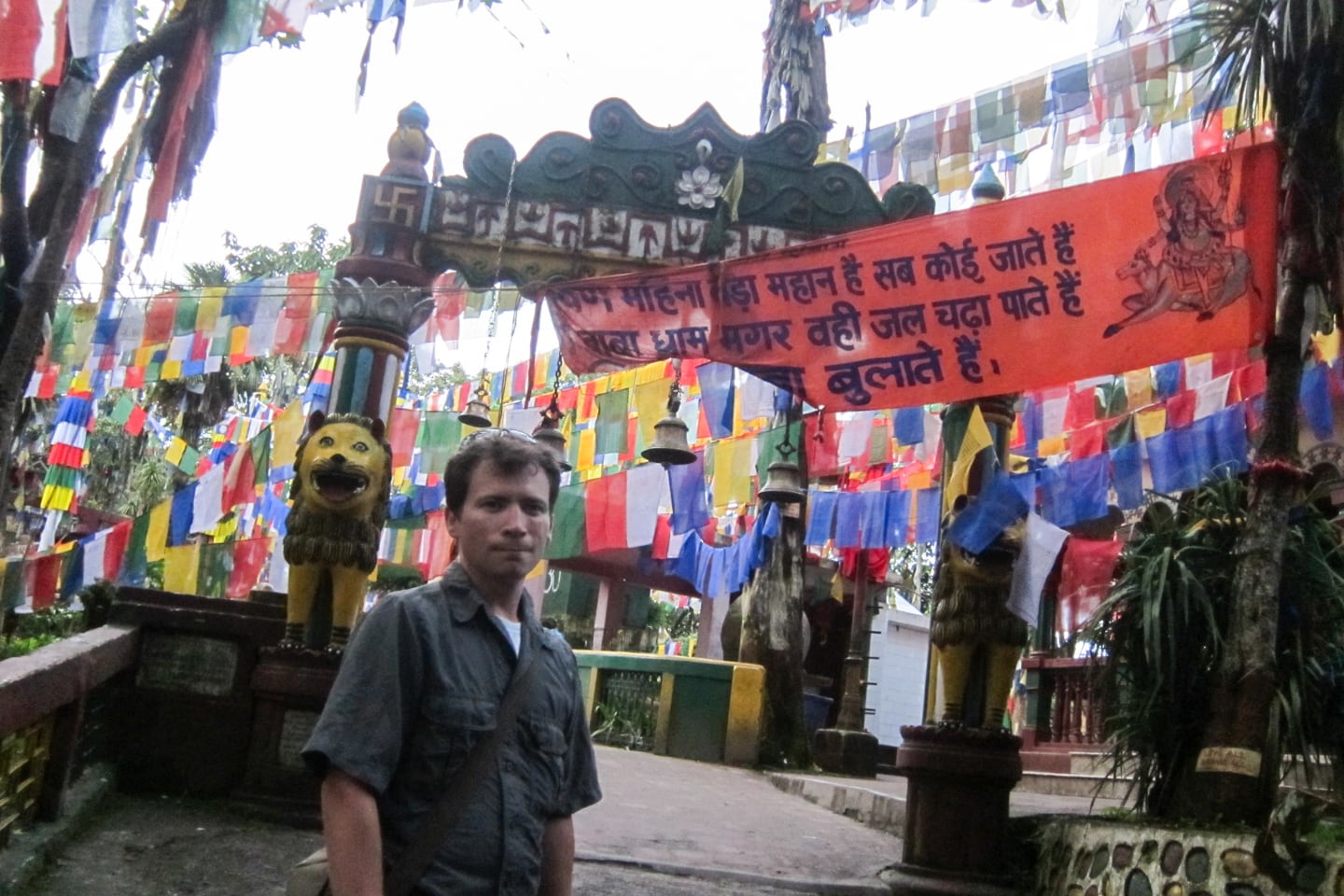
Farther on is the beautiful Buddhist Bhutia Busty monastery perched on a hillside, sporting a killer backdrop of snow-capped Himalayan peaks (so we’re told — it was overcast when we visited).
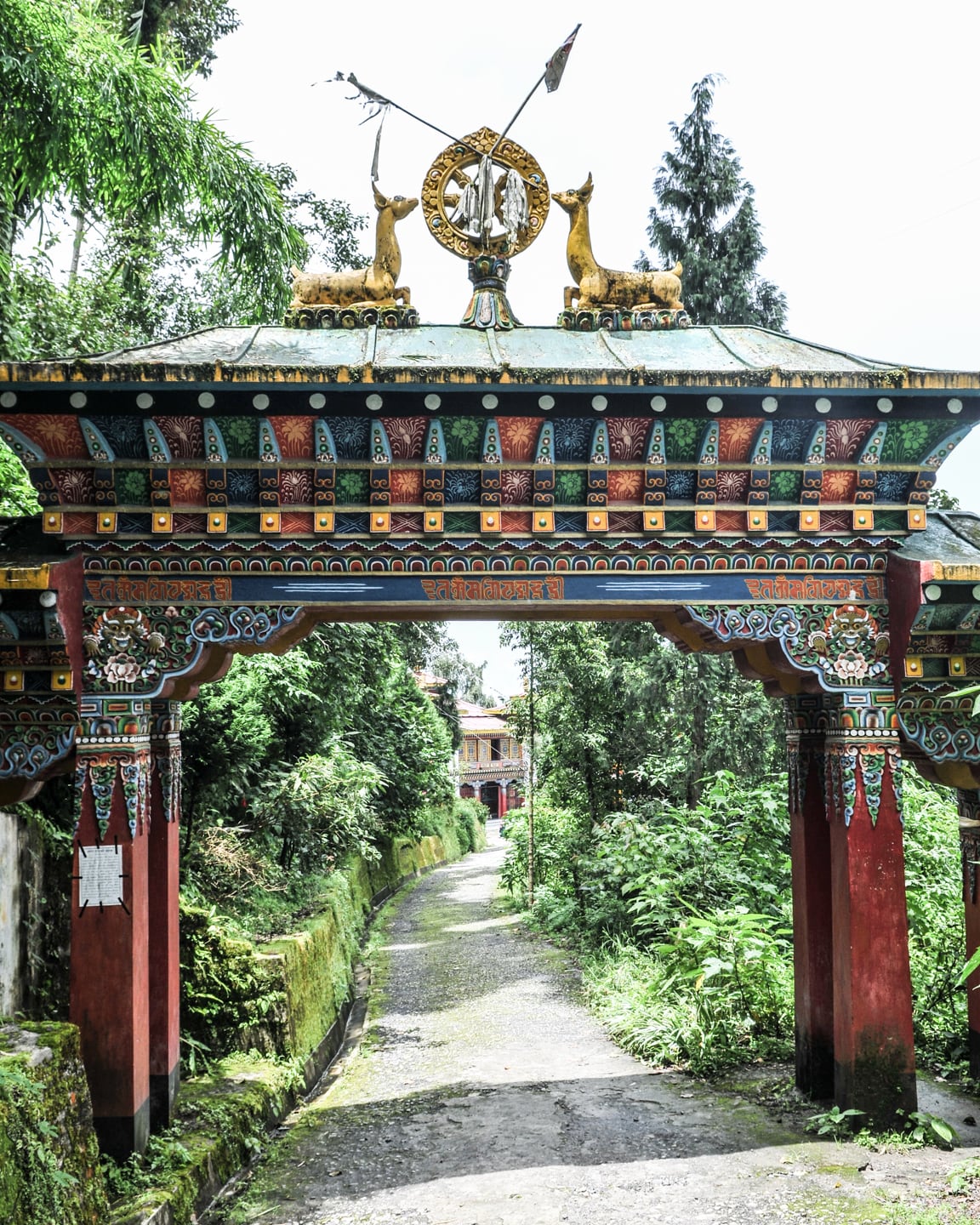
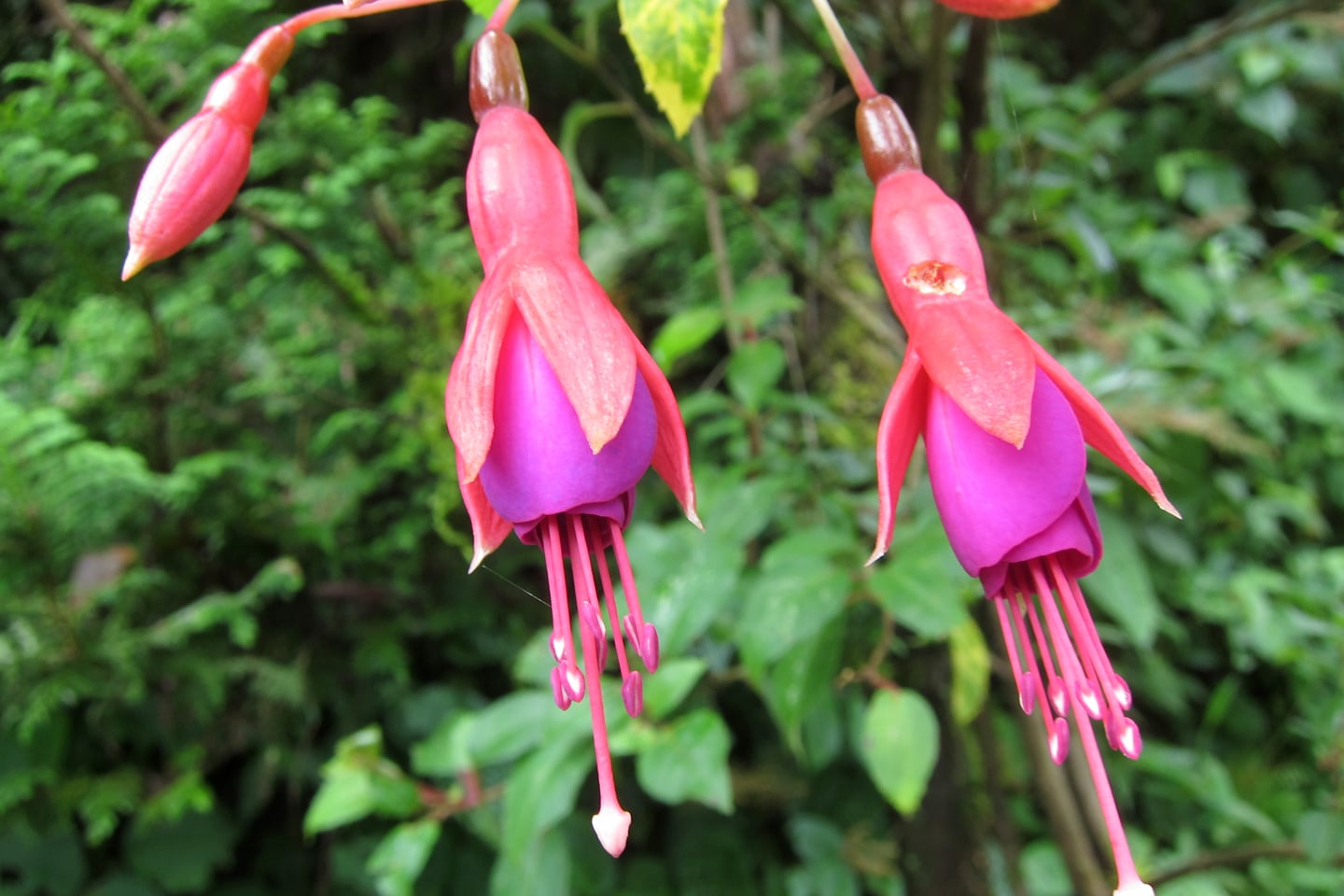
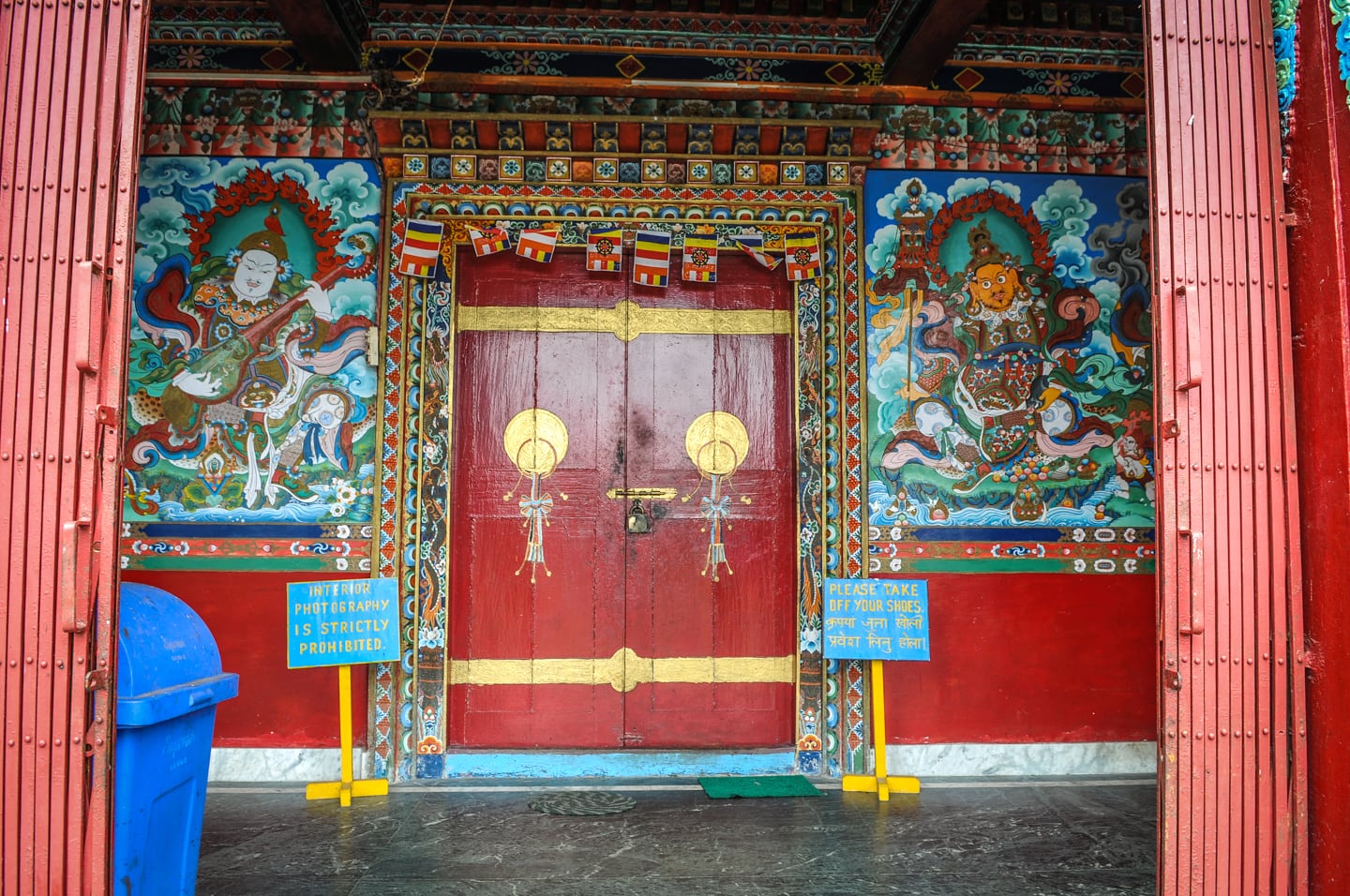
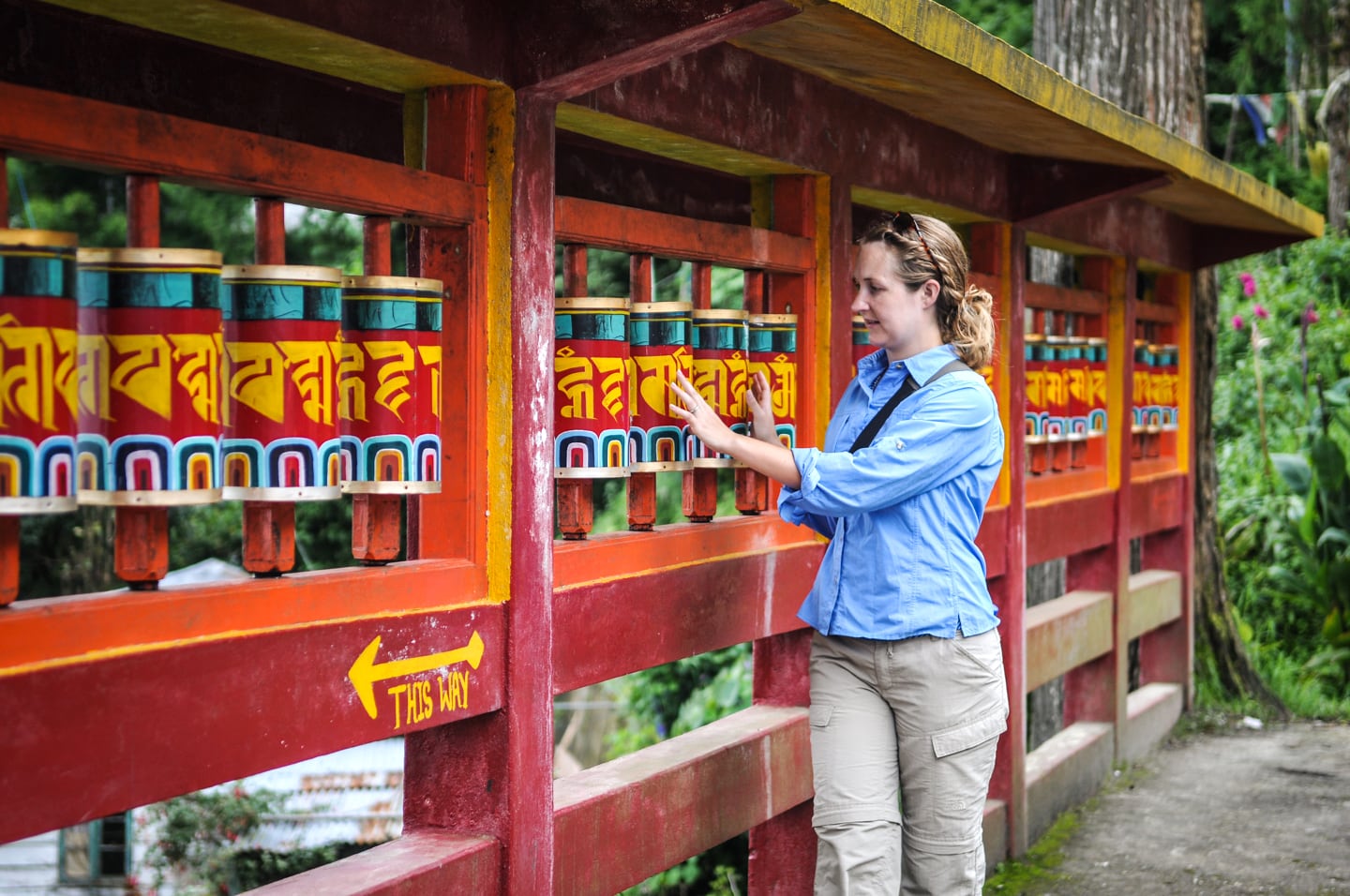
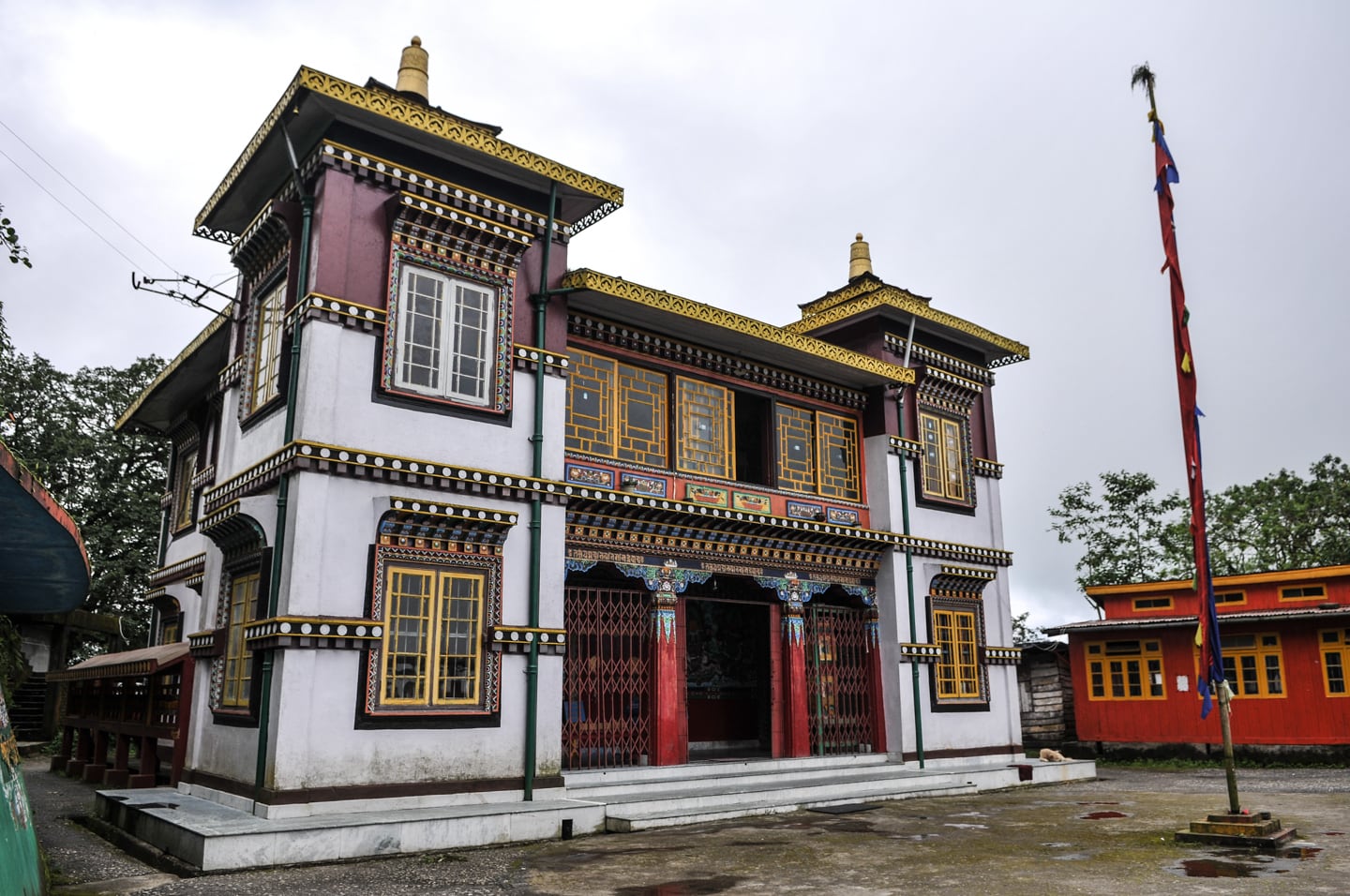
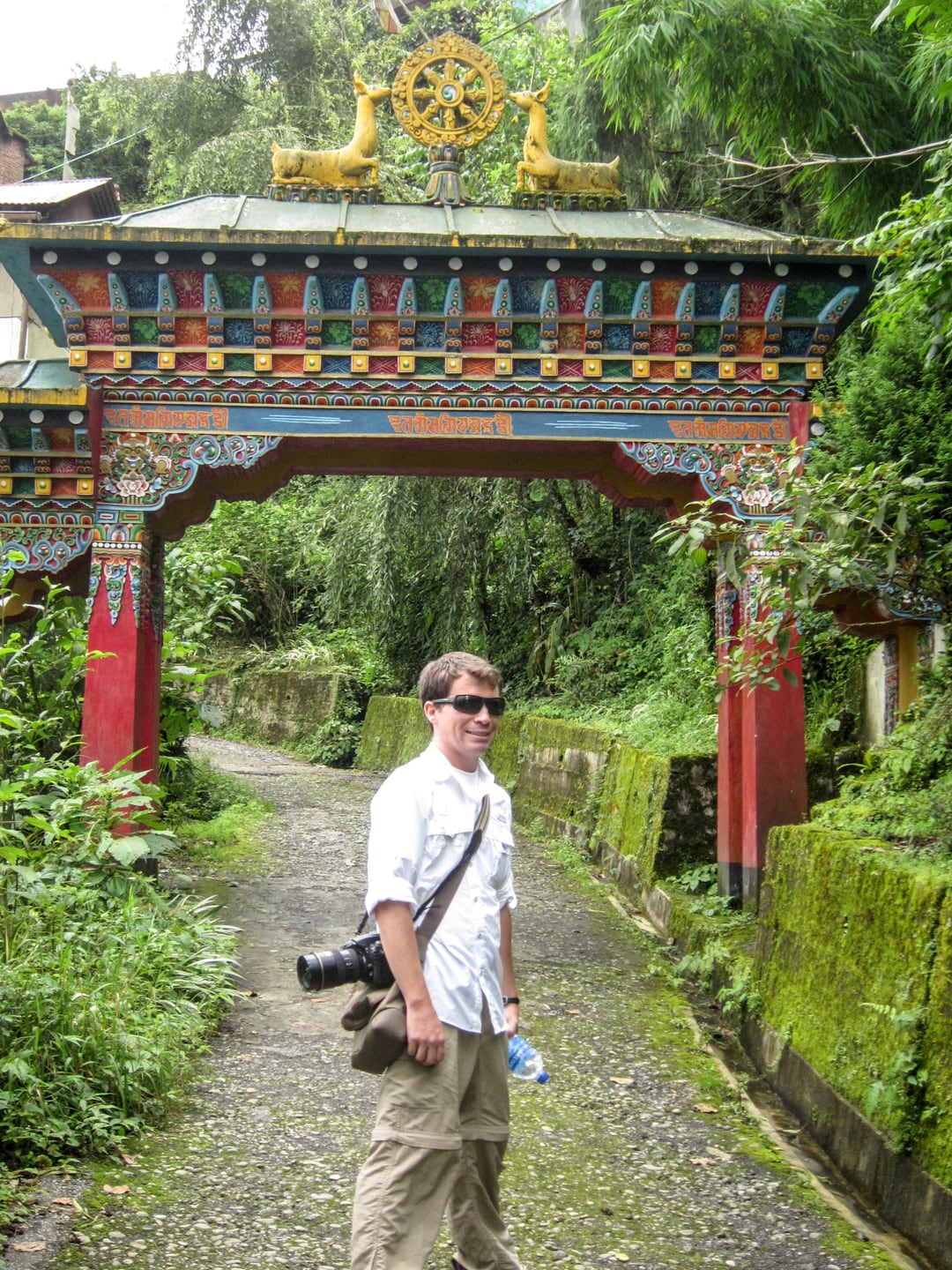
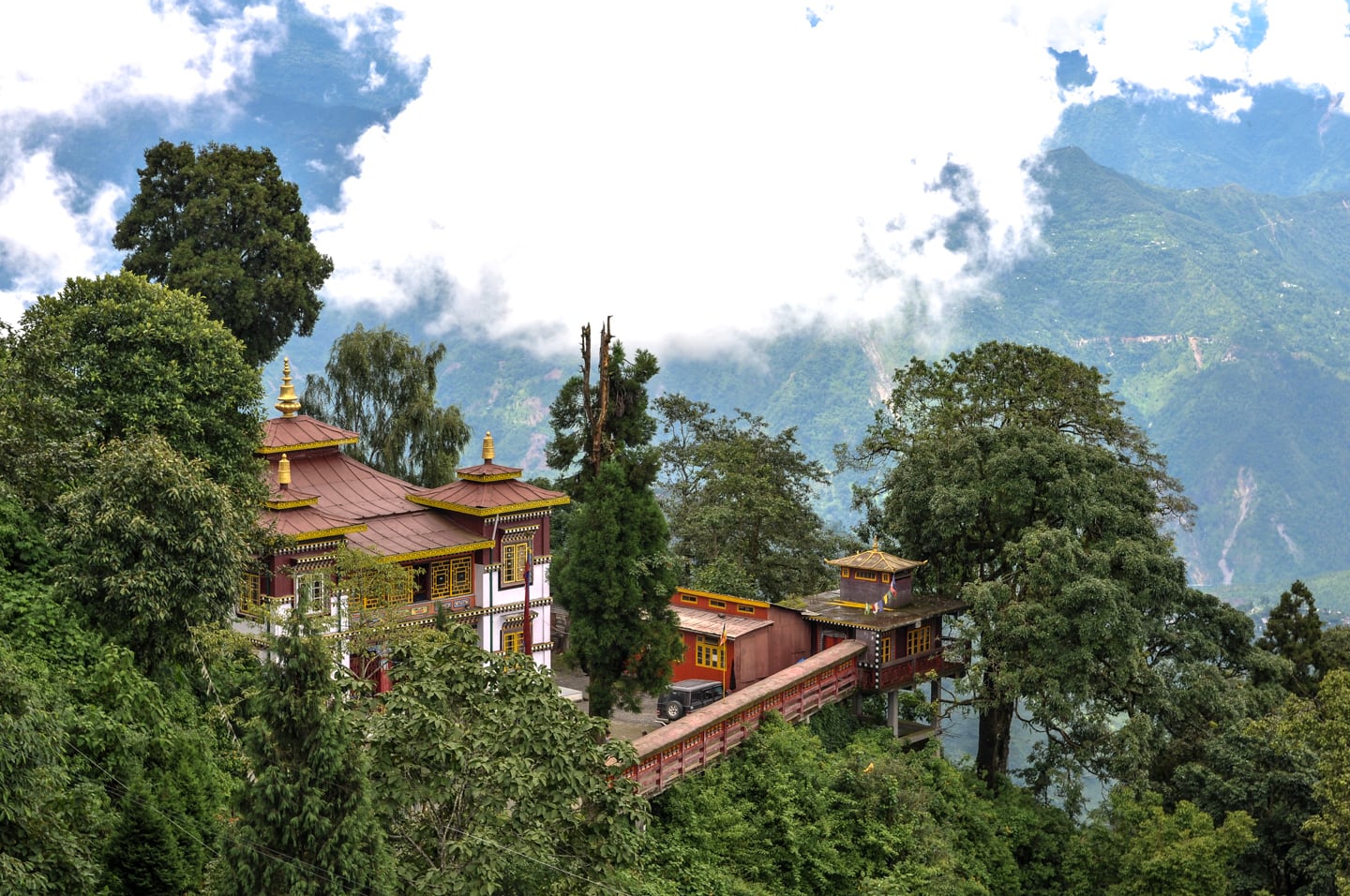
Another nice walk we took involved heading uphill from Hotel Tranquility to catch the sunset. This route gets away from the canyons of concrete hotels and becomes an actual neighborhood where local homes intermix with high-end boutique guesthouses.
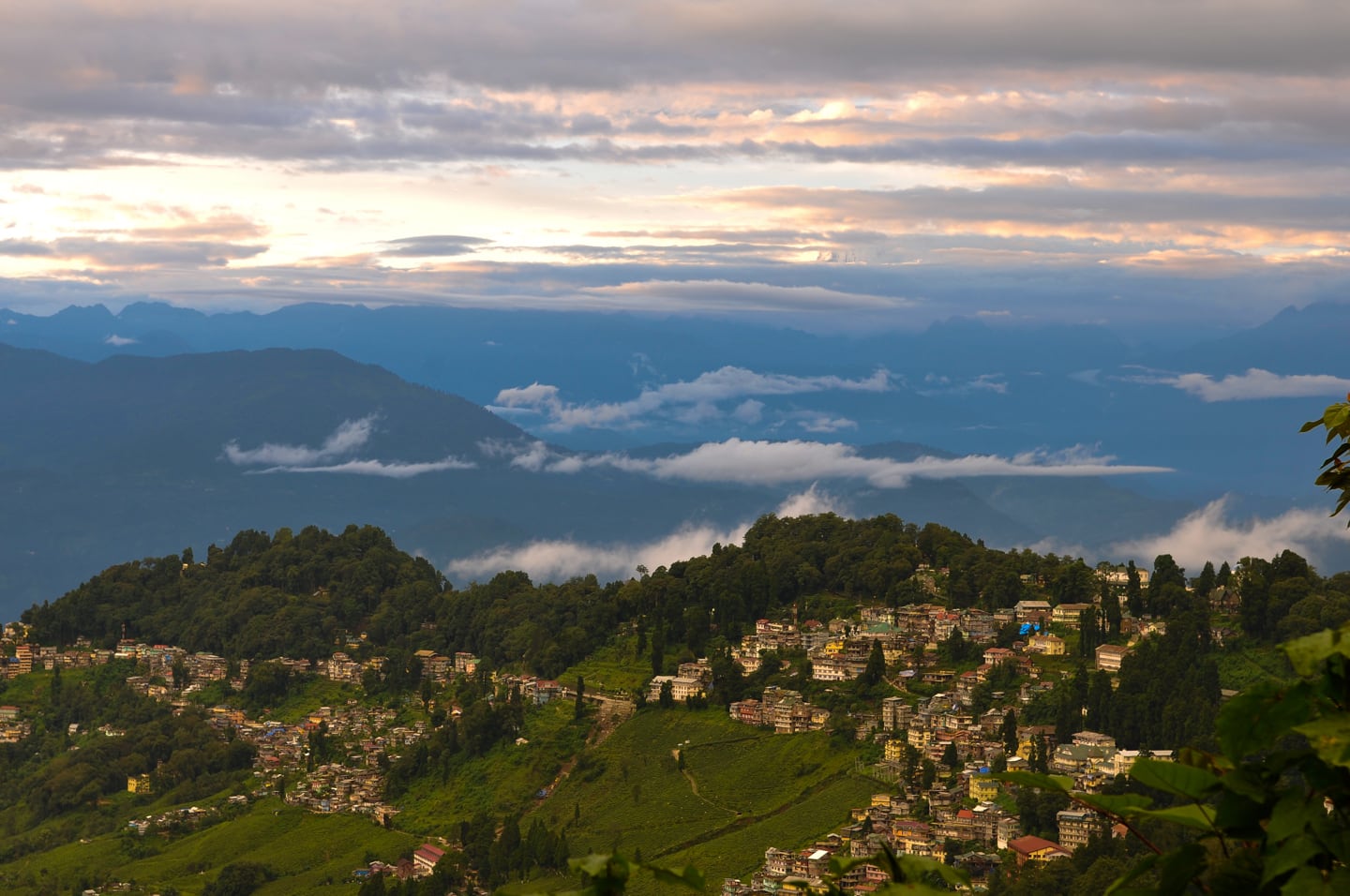
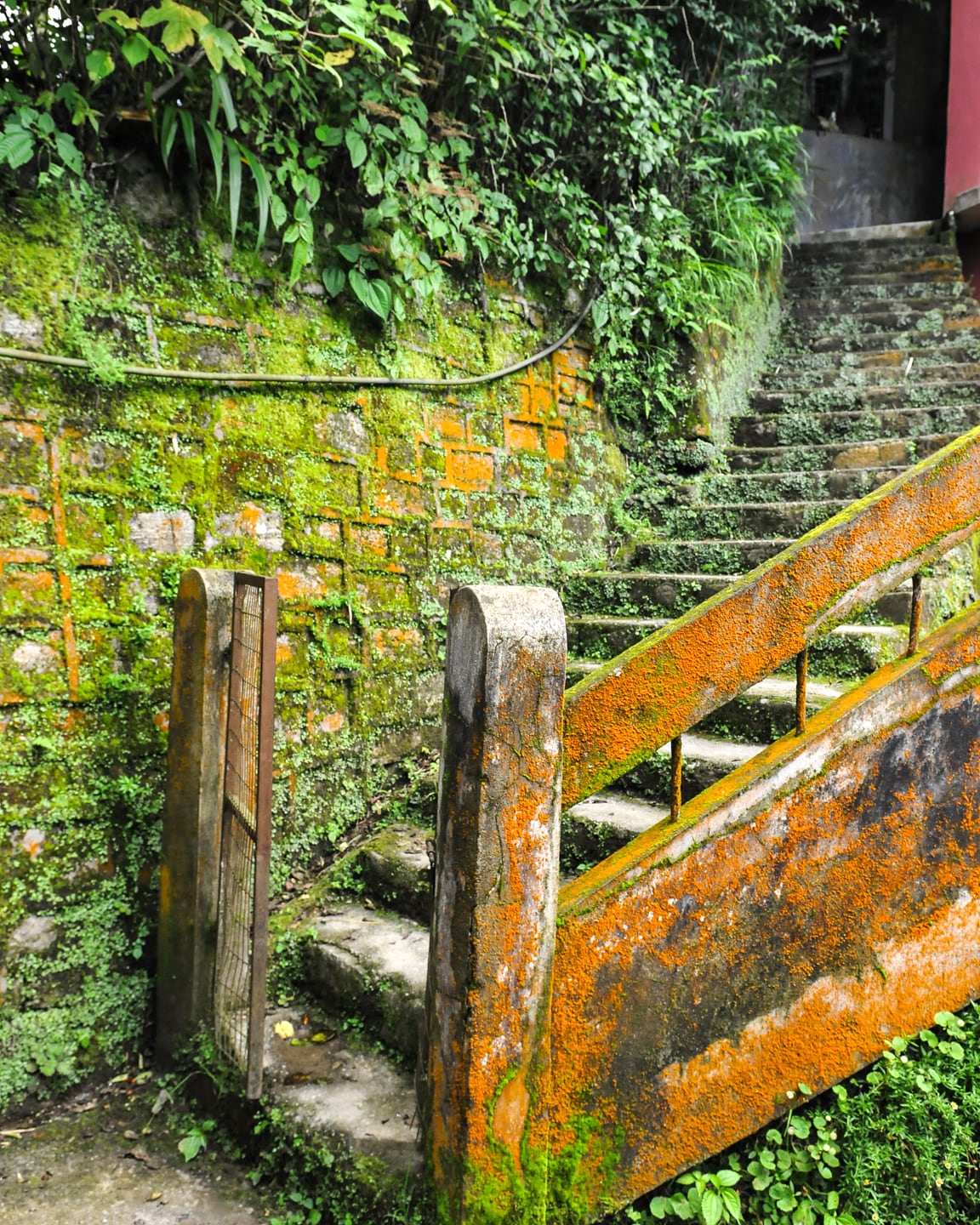
More Snippets of Darjeeling Life
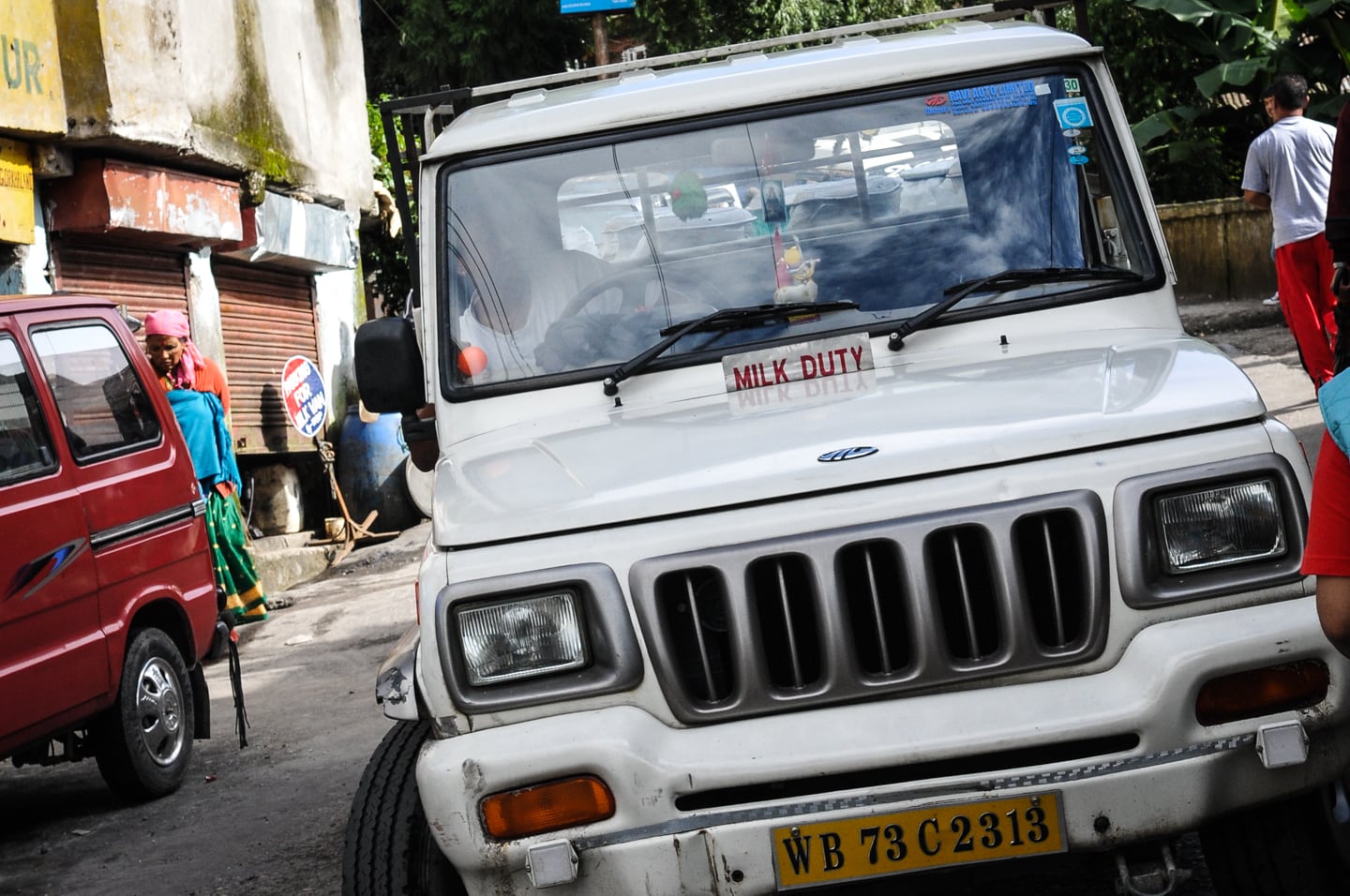
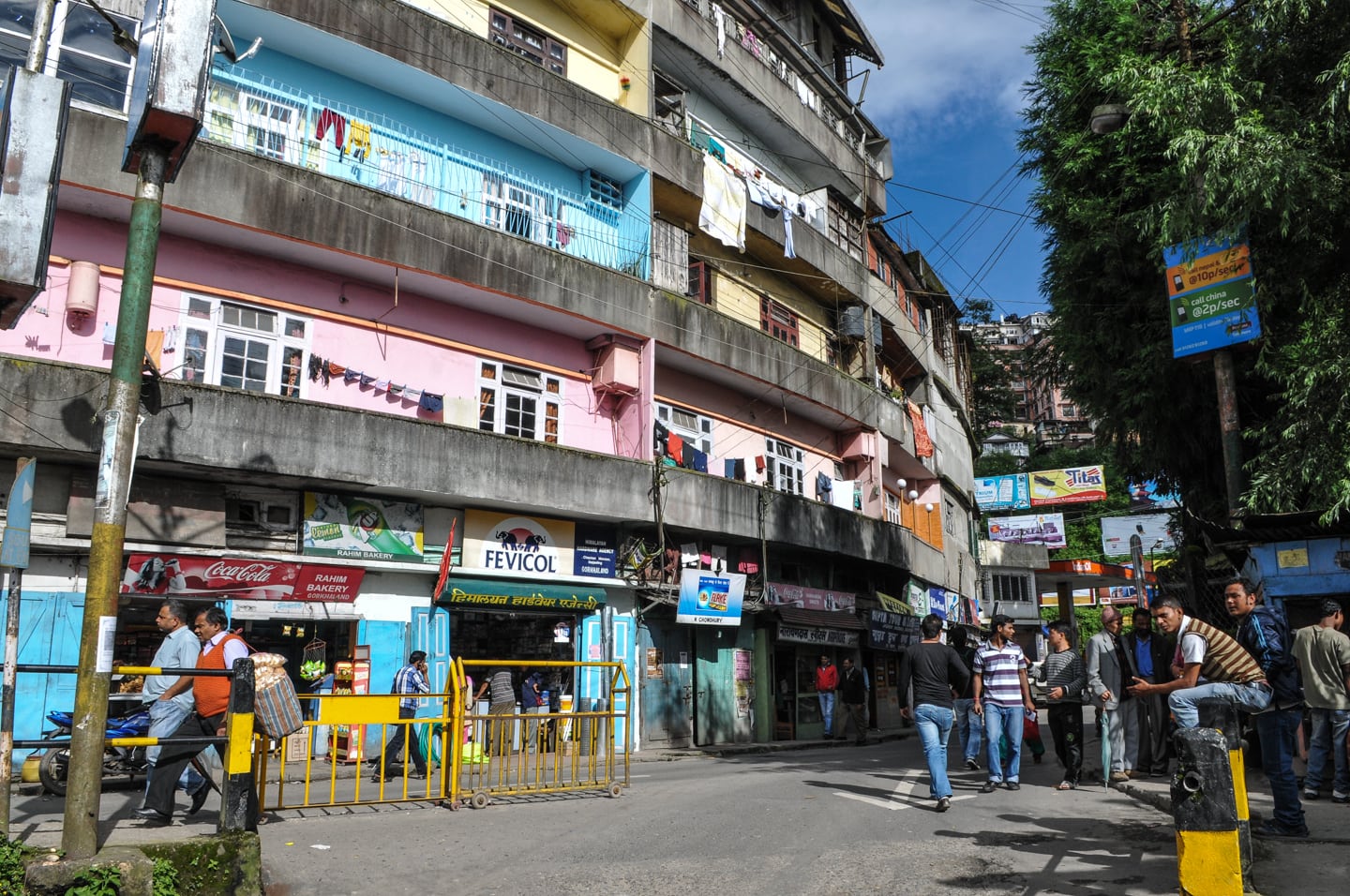
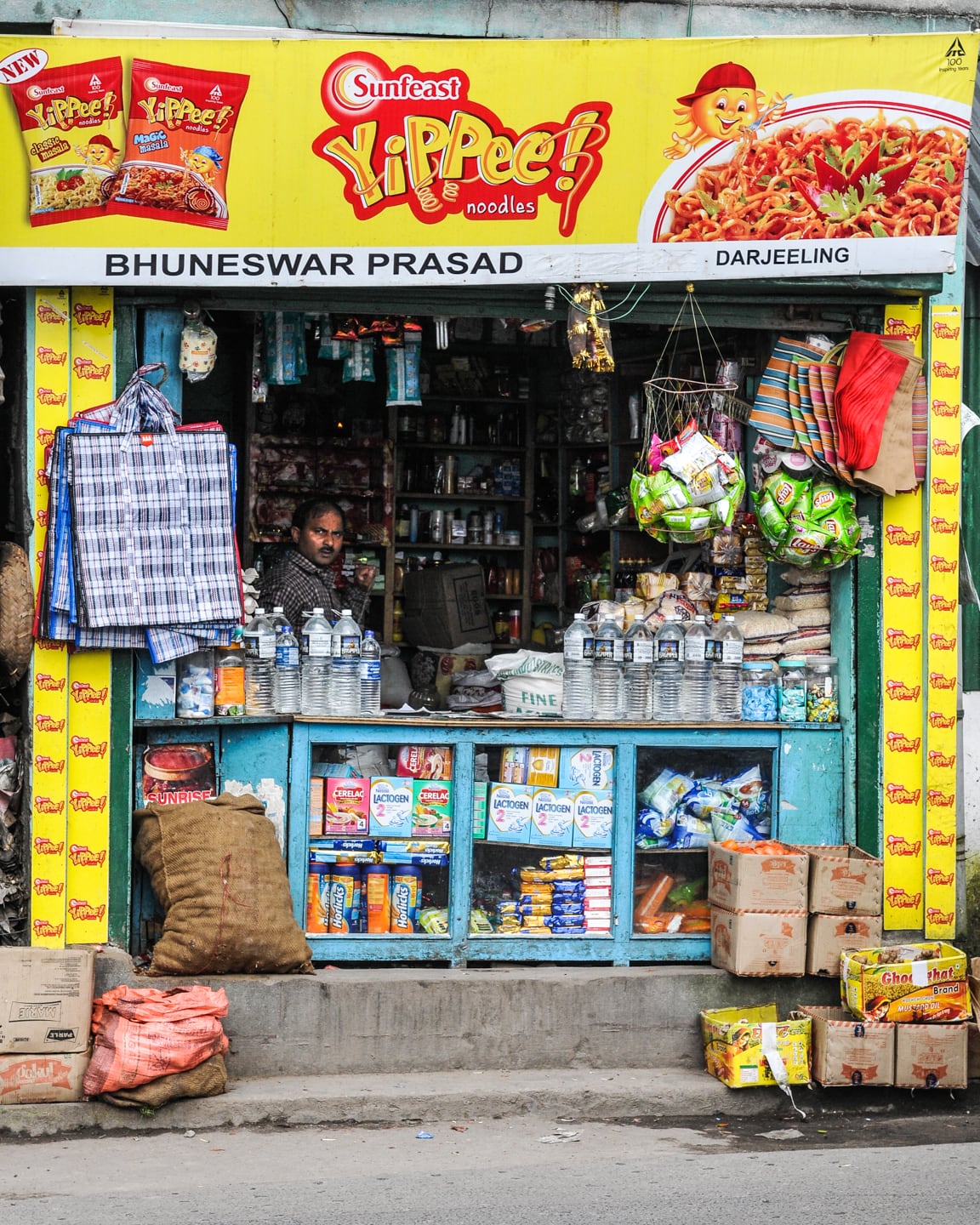
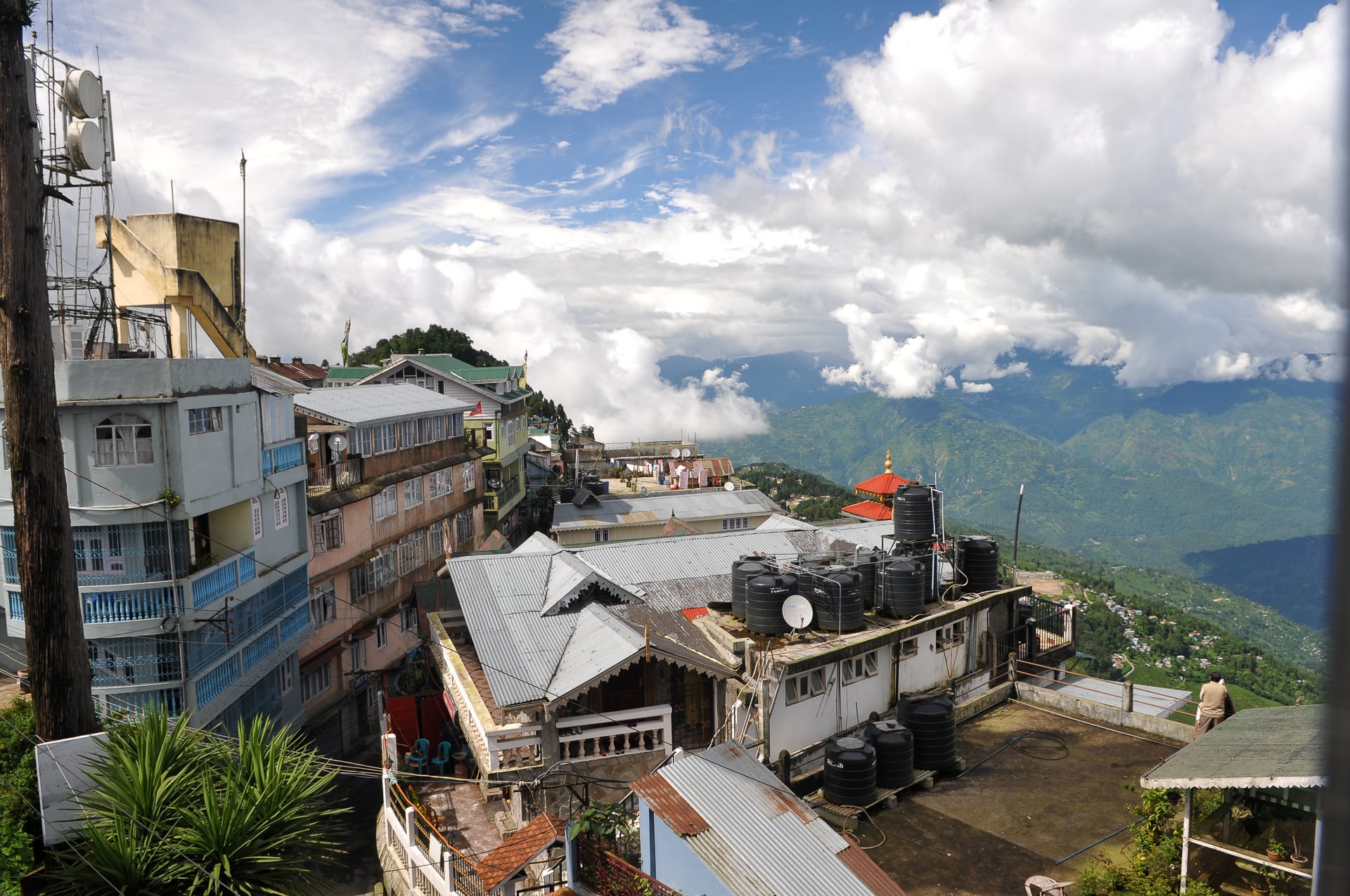
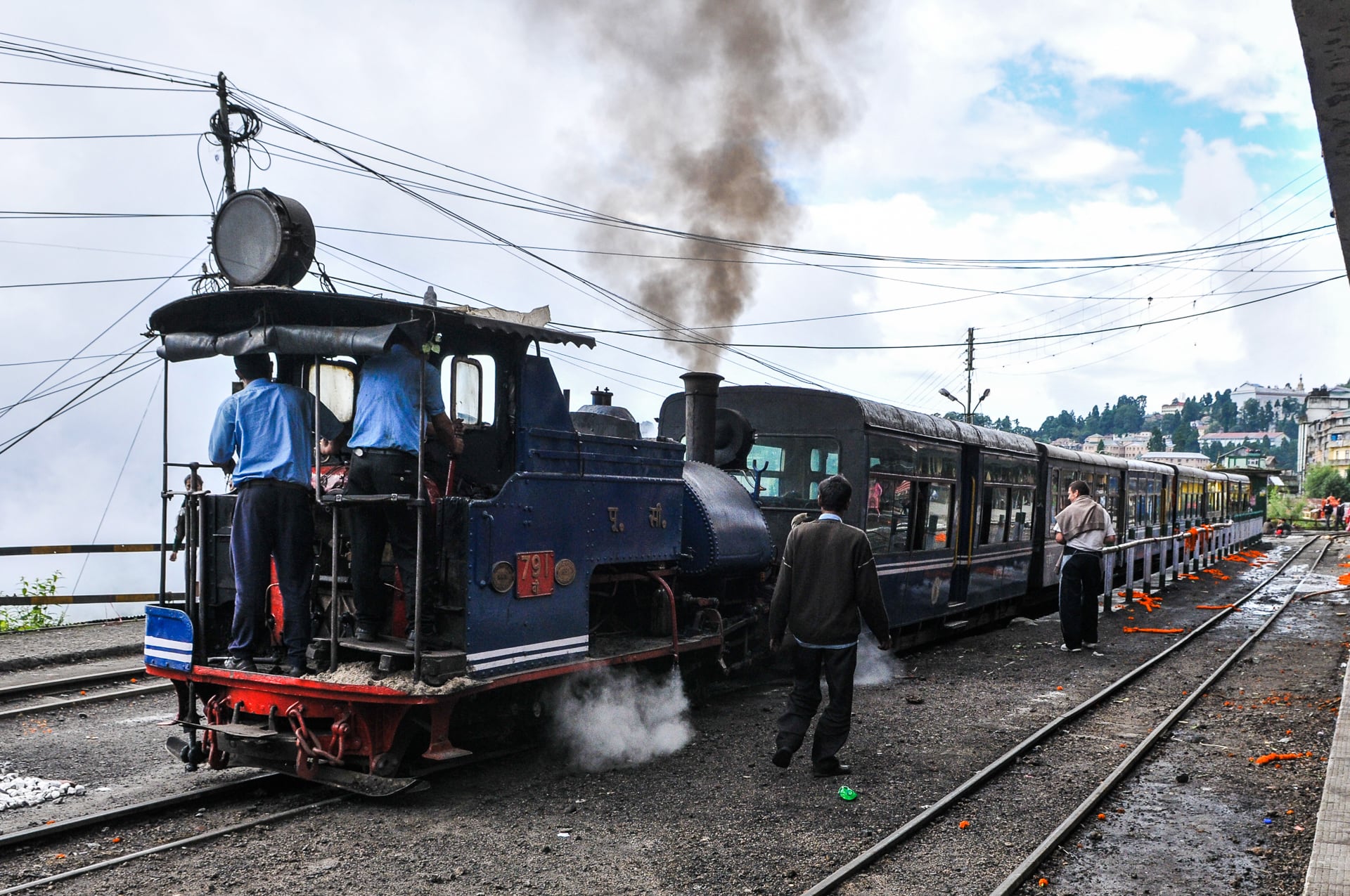
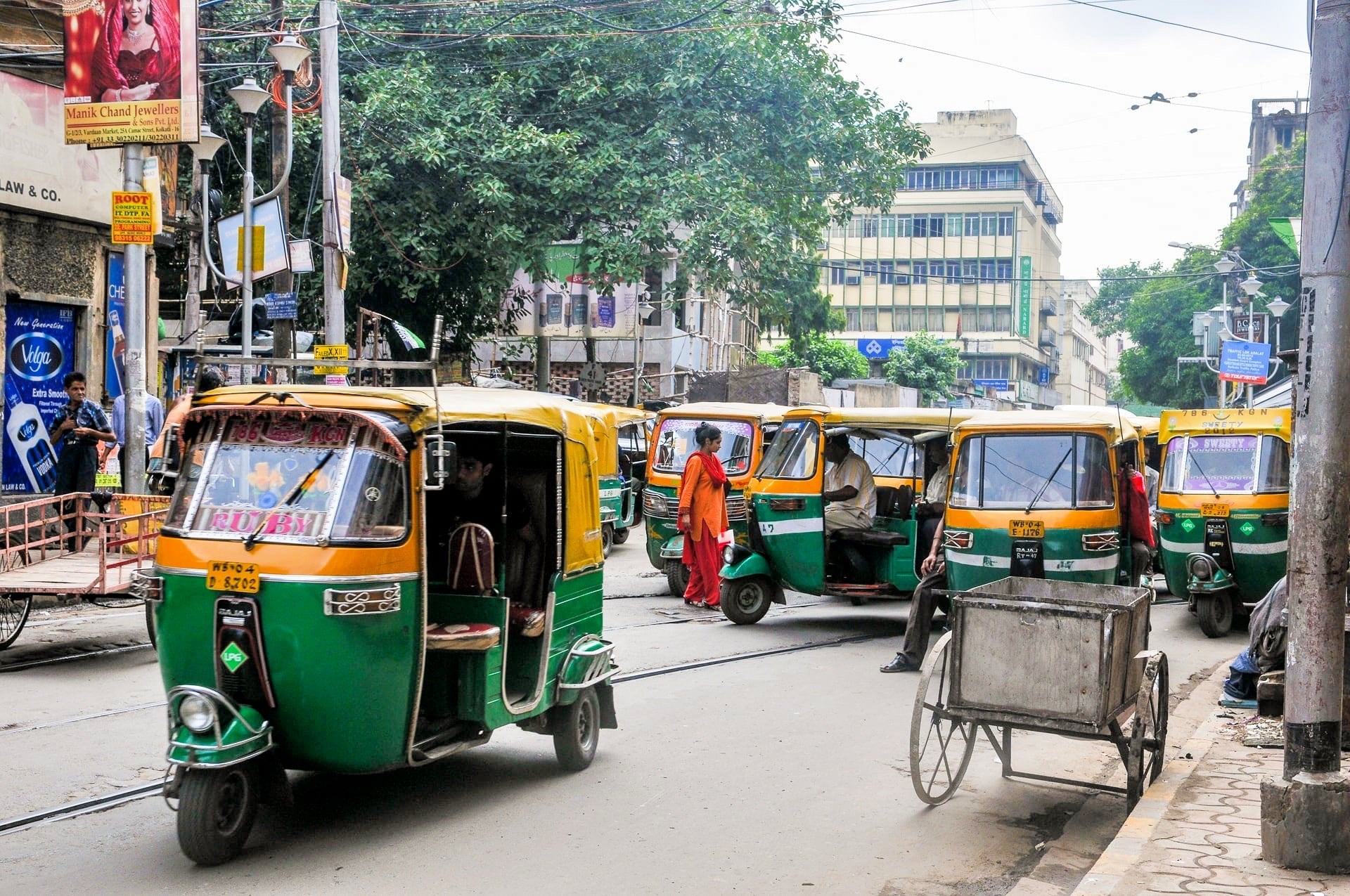
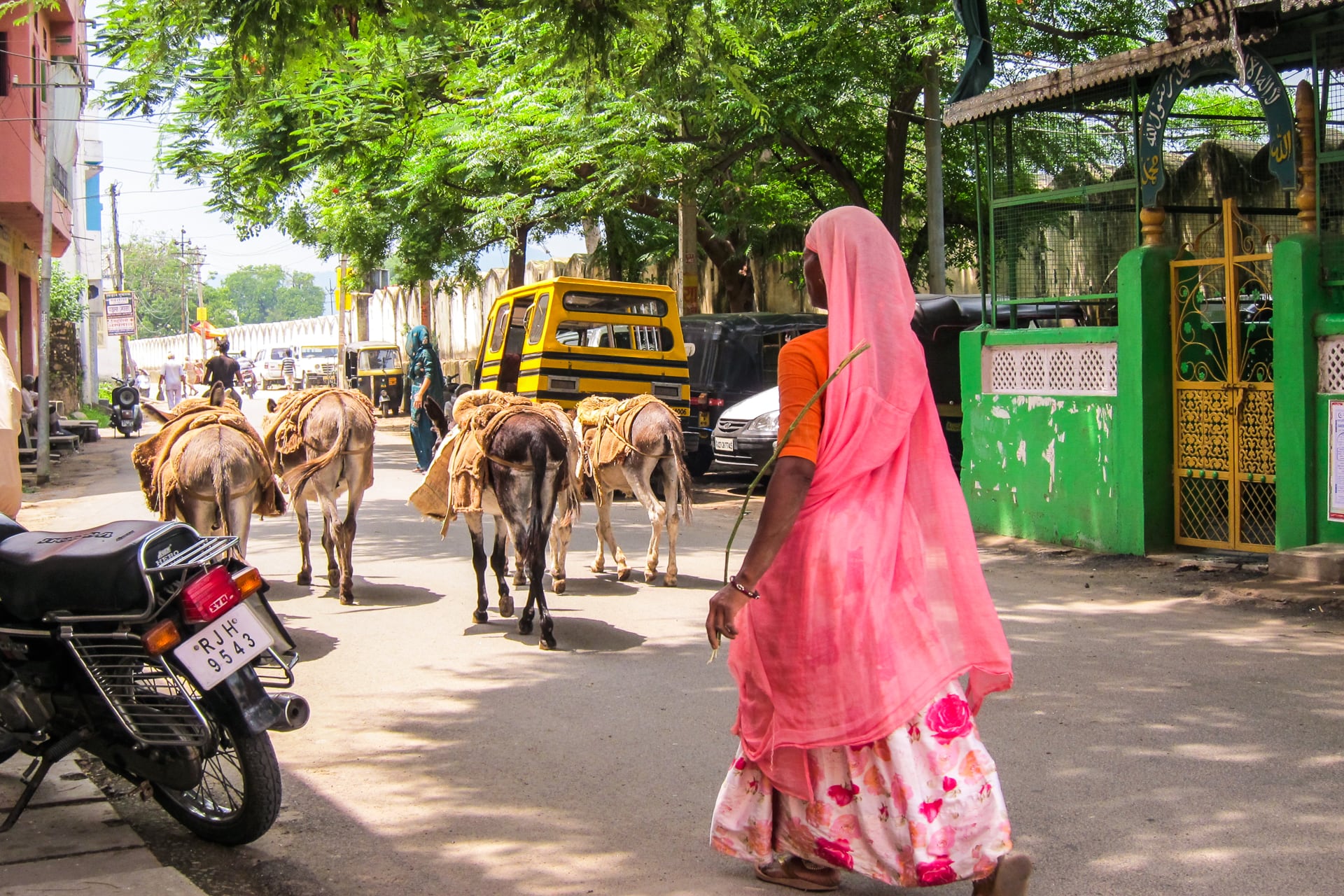
Amazing . . . I am learning so much about the world through your travels and wonderful writing! Darjeeling is such a surprise! What is Lori reading so studiously?
Wishing you both healthy and happy travels!
Love, Laura